31 March - 2 April 2018
Fougeres -
"The Château de Fougères is a castle in the commune of Fougères in the Ille-et-Vilaine département of France. The castle was built on a naturally protected site, a rock emerging from a swamp surrounded by a loop of the Nançon river acting as a natural moat. It had three different enclosures: the first for defensive purposes; the second for day to day usages in peacetime and for safety of the surrounding populations in times of siege; and the last for the protection of the keep. In all it has an impressive 13 towers. Today the castle belongs to the municipality and is one of Europe's largest medieval fortresses."
A "French chateau" is castle, who'd thunk it?
These first two photos were taken after we'd ascended to the higher part of the town, but shows the castle more in its entirety. This is a pass through town for us today - we parked at the far end, beyond the two taller towers. The tour book said there's not a whole lot to see from inside, so we withheld a close-up inspection of a castle, with well preserved interiors, for later.
A preserved outdoors laundromat.
Onto Amboise, a commune in the Indre-et-Loire department in central France lying on the banks of the Loire River, 27 kilometres (17 mi) east of Tours. Today a small market town, it was once home of the French royal court. The town of Amboise is also only about 18 kilometres (11 mi) away from the historic Château de Chenonceau, situated on the Cher River near the small village of Chenonceaux.
"Market town or market right is a legal term, originating in the Middle Ages, for a European settlement that has the right to host markets, distinguishing it from a village and city. Initially, market towns most often grew up close to fortified places, such as castles or monasteries, not only to enjoy their protection, but also because large manorial households and monasteries generated demand for goods and services."
We were in luck to arrive on the right day for the modern version of a market.
"One of the most popular markets in the Loire Valley is the large Sunday market along the banks of the river Loire at Amboise. The vendors set up along the two long, tree-lined avenues of the market place. Here you will find fish, meat, bread, fruit & veg,.cheese, flowers, clothing, kitchen supplies, furniture, soft furnishings, jewellery, handbags, garden supplies, live birds...and just about everything you can think of.
You will find goods from local producers plus others brought into the region - fish from Brittany for example. Amboise market attracts shoppers from the surrounding area of the town and from further afield with people making a daytrip of, market in the morning, them perhaps a picnic by the Loire in the afternoon with the bottle of Vouvray, bread cheese and rilletes that they have just bought. Or they visit the chateau or Clos Luce where Leonardo de Vinci spent his last years."
We were in luck to arrive on the right day for the modern version of a market.
"One of the most popular markets in the Loire Valley is the large Sunday market along the banks of the river Loire at Amboise. The vendors set up along the two long, tree-lined avenues of the market place. Here you will find fish, meat, bread, fruit & veg,.cheese, flowers, clothing, kitchen supplies, furniture, soft furnishings, jewellery, handbags, garden supplies, live birds...and just about everything you can think of.
You will find goods from local producers plus others brought into the region - fish from Brittany for example. Amboise market attracts shoppers from the surrounding area of the town and from further afield with people making a daytrip of, market in the morning, them perhaps a picnic by the Loire in the afternoon with the bottle of Vouvray, bread cheese and rilletes that they have just bought. Or they visit the chateau or Clos Luce where Leonardo de Vinci spent his last years."
Sewing, crocheting, and knitting products -- we have not been able to find knit caps to our liking, which we will need on our chartered sailing trip. So Gerri decided to buy all the stuff she'll need for crocheting a pair for us.
Tasty French fries and tempting French flowers.
Meat lovers, and a flower sniffer.
Spring is in the air in Amboise today - Gerri in the churchyard during services, and a couple on an outing with their "fun" car.
Our lodging at the heart of town - our window is just above the awning's word "glacier". At night the town is very quiet, but during market day, bustling.
Nutella seems big in Europe. Gerri in front of "Vin d'Amboise" - an unexpected surprise, a wine tasting promoting local wineries under the town's chateau .
The Château d'Amboise is a château confiscated by the monarchy in the 15th century, it became a favoured royal residence and was extensively rebuilt. After the 17th century it fell out of favor with the royals, and faded in glory.
The Château d'Amboise is a château confiscated by the monarchy in the 15th century, it became a favoured royal residence and was extensively rebuilt. After the 17th century it fell out of favor with the royals, and faded in glory.
On the right, an interesting home built into the hill face, the dwelling place of troglodytes (cave dwellers).
Our guidebook steered us along to the Clos Lucé manor house where Leonardo da Vinci lived for several years (and ultimately died) at the invitation of King Francis I of France. His death, almost 500 years ago, still grieves Gerri (or maybe the effects of the wine tasting lingers).
On top, and along, the chateau's walls - a Pebble Beach looking tree, and a scene looking like "Fiddler on the Roof". Amboise cat tolerating the drunk woman.
Finally, we get to see up close and personal a French chateau. We'd passed on several others to now see one that comes highly recommended for touring.
"The Château de Chenonceau is a French château spanning the River Cher, near the small village of Chenonceaux. The estate of Chenonceau is first mentioned in writing in the 11th century. The current château was built in 1514–1522 on the foundations of an old mill and was later extended to span the river. The bridge over the river was built (1556-1559) to designs by the French Renaissance architect Philibert de l'Orme, and the gallery on the bridge, built from 1570–1576 to designs by Jean Bullant."
"The Château de Chenonceau is a French château spanning the River Cher, near the small village of Chenonceaux. The estate of Chenonceau is first mentioned in writing in the 11th century. The current château was built in 1514–1522 on the foundations of an old mill and was later extended to span the river. The bridge over the river was built (1556-1559) to designs by the French Renaissance architect Philibert de l'Orme, and the gallery on the bridge, built from 1570–1576 to designs by Jean Bullant."
Our visit day is cloudy/rainy, once again, so posted below are more glorious photos taken from Wikipedia (goto the article for sources - there, I didn't take credit for them).
Amazing vaulted masonry work - this work is not done cheaply. On the right below, doesn't this scene make you want to sing "Don't Come Around Here No More" by Tom Petty, as inspired by the Alice in Wonderland themed music video.
In the chateau's chapel, more fine work.
"An architectural mixture of late Gothic and early Renaissance, Château de Chenonceau and its gardens are painstakingly maintained. Other than the Royal Palace of Versailles, it is the most visited château in France.
The château has been classified as a Monument historique since 1840 by the French Ministry of Culture. Today, Chenonceau is a major tourist attraction and in 2007 received around 800,000 visitors."
The château has been classified as a Monument historique since 1840 by the French Ministry of Culture. Today, Chenonceau is a major tourist attraction and in 2007 received around 800,000 visitors."
A butcher's space, and the cooking area.
And now we visit the gardens, while it gets some good soaking light rain.
We pass through to the far gardens, on the way to the farm and stables area, spotting a farm cat.
The farm still provides flowers, but only animals which do not make their way to the butcher's shop.
On our way back to the car, fun in the topiary maze, and then we go back to Amboise for one last night before heading to Auray.
Back to Église Saint-Denis (Church of St. Denis), which we had dropped by previously, but had services happening. A relatively small one, but many points of interest.
(middle photo) St. Denis is the most famous cephalophore (a saint who is generally depicted carrying his or her own head) in Christian legend, with a popular story claiming that the decapitated bishop picked up his head and walked several miles while preaching a sermon. He is venerated as the patron saint of France and Paris
Gerri finishing my sailor's watch cap.

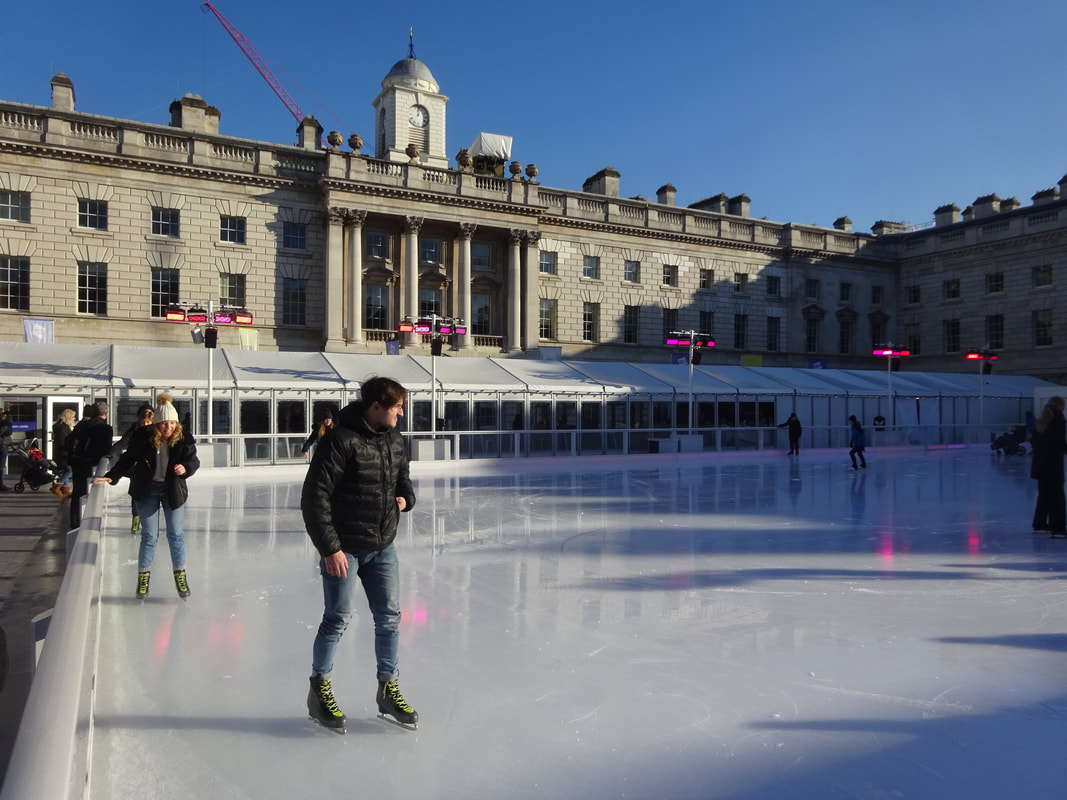
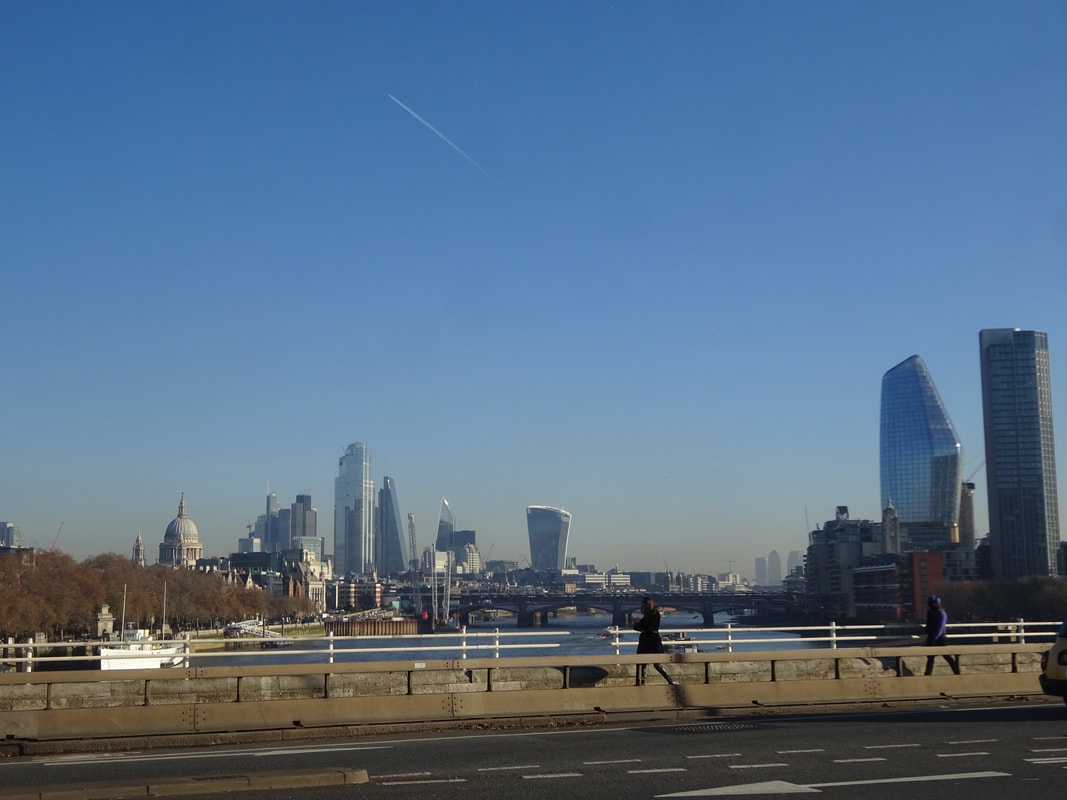
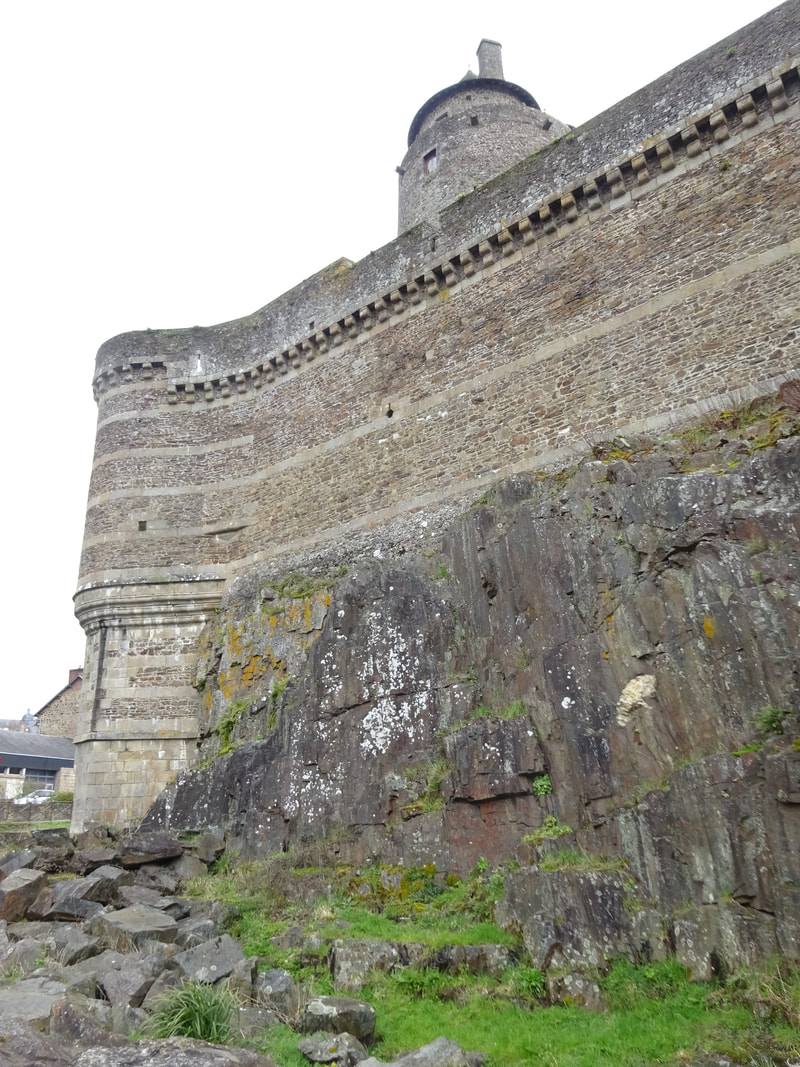
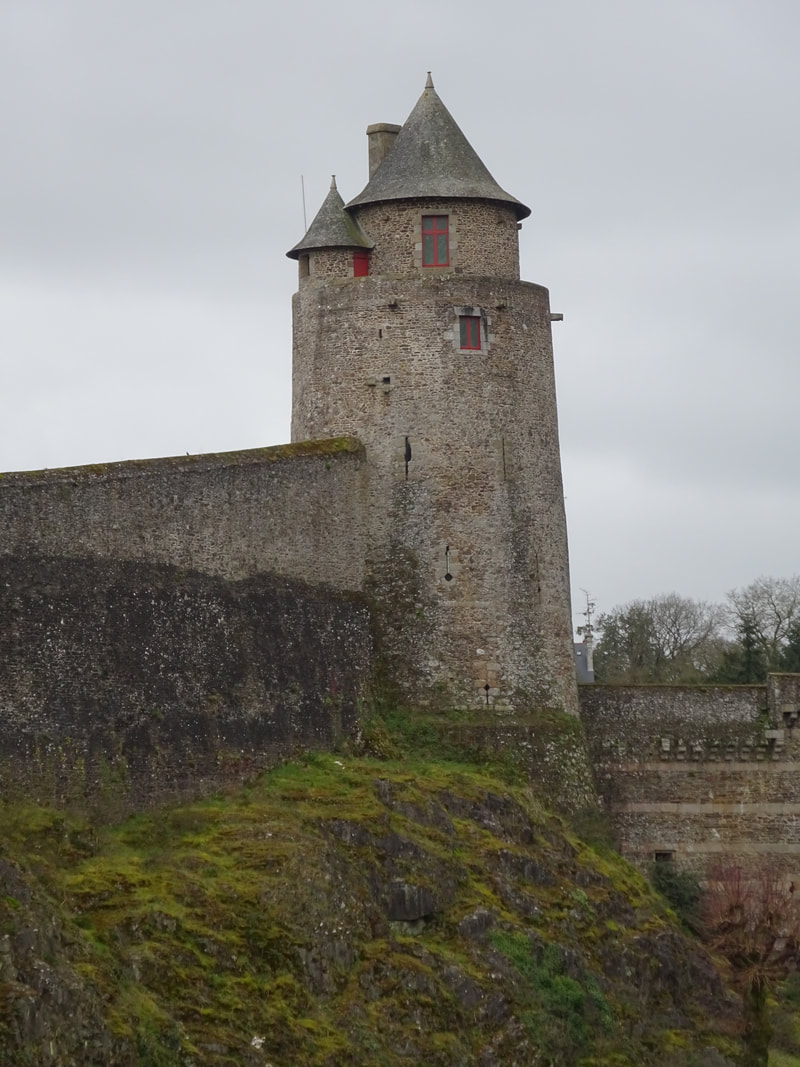
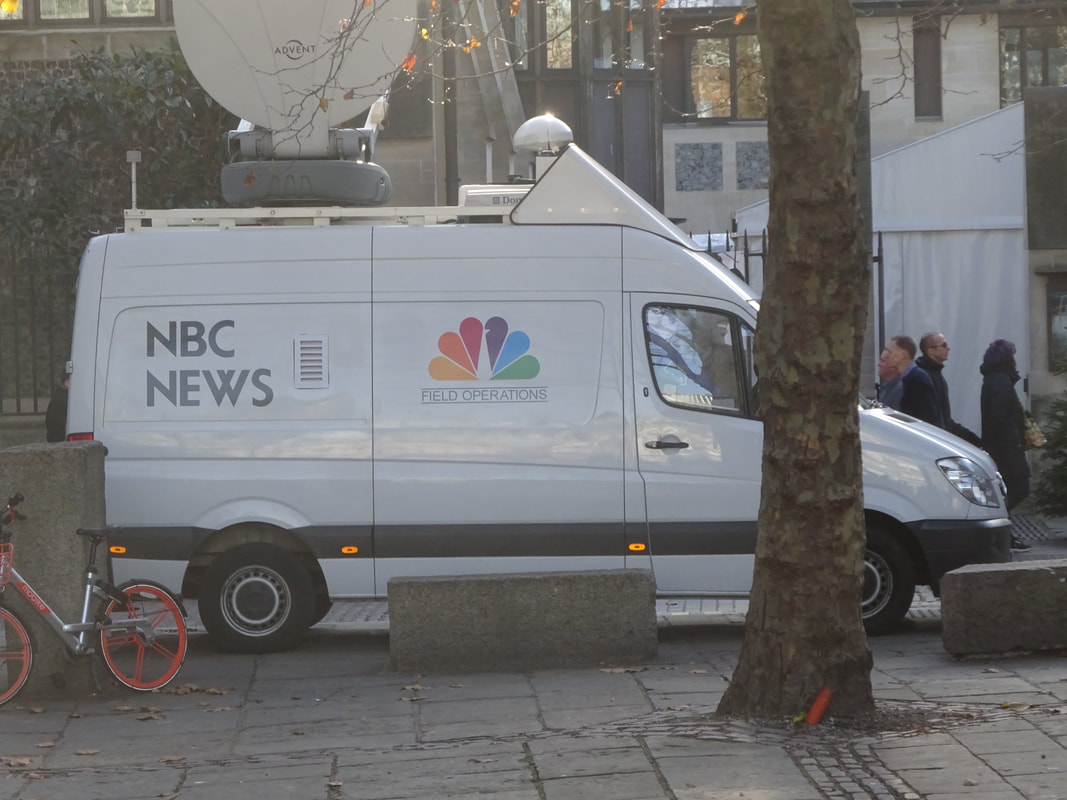
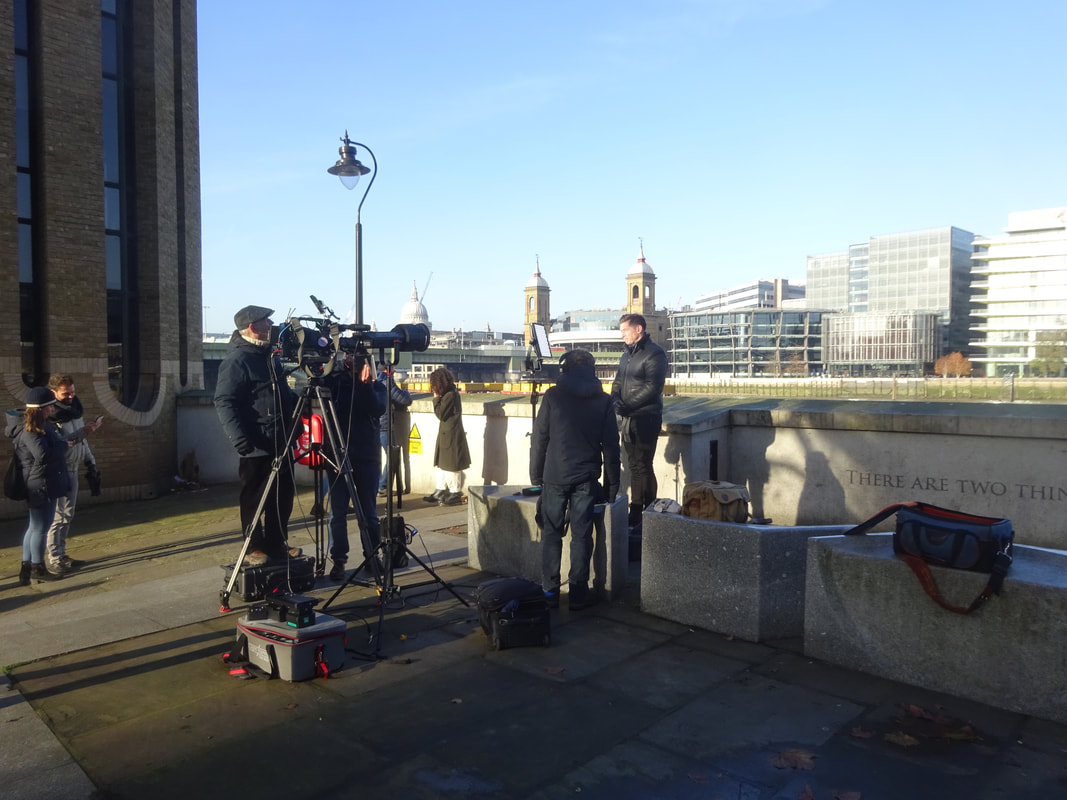
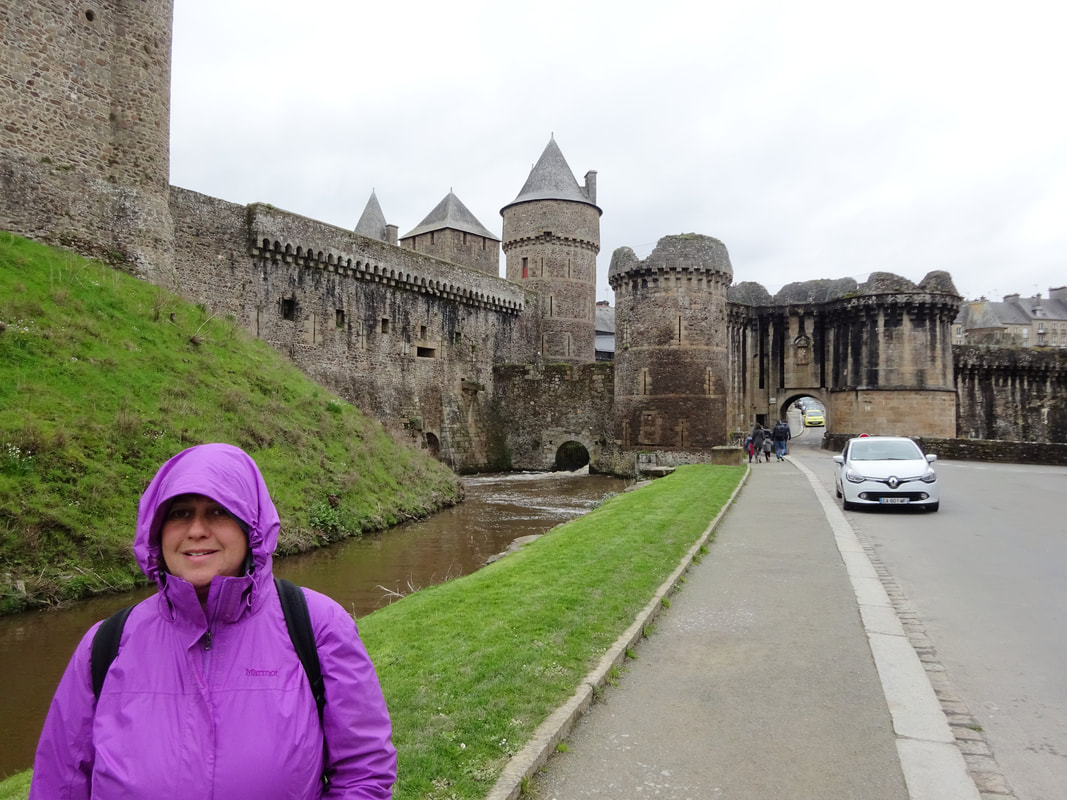
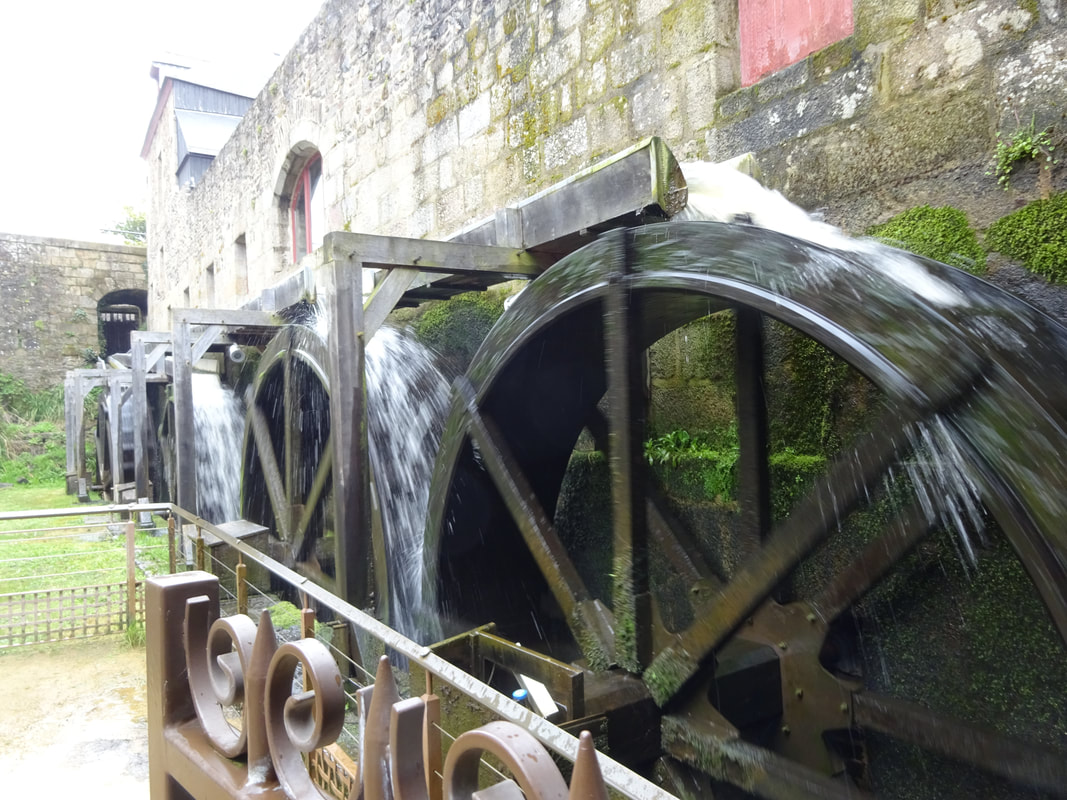
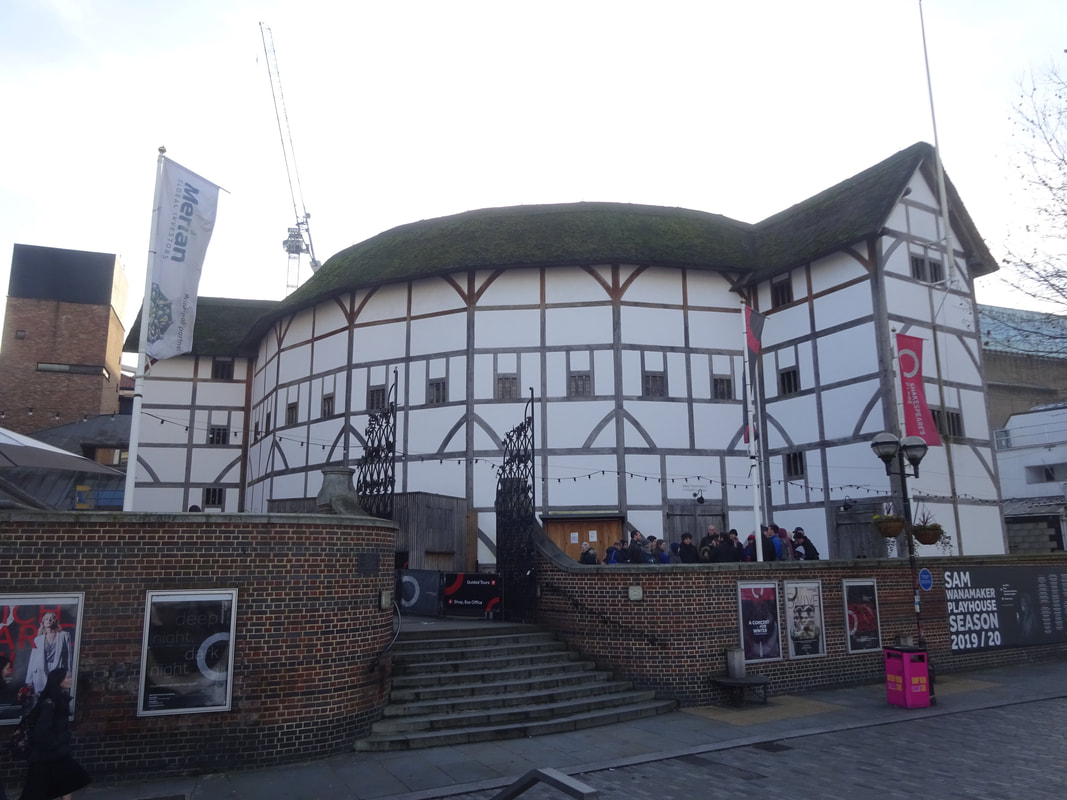

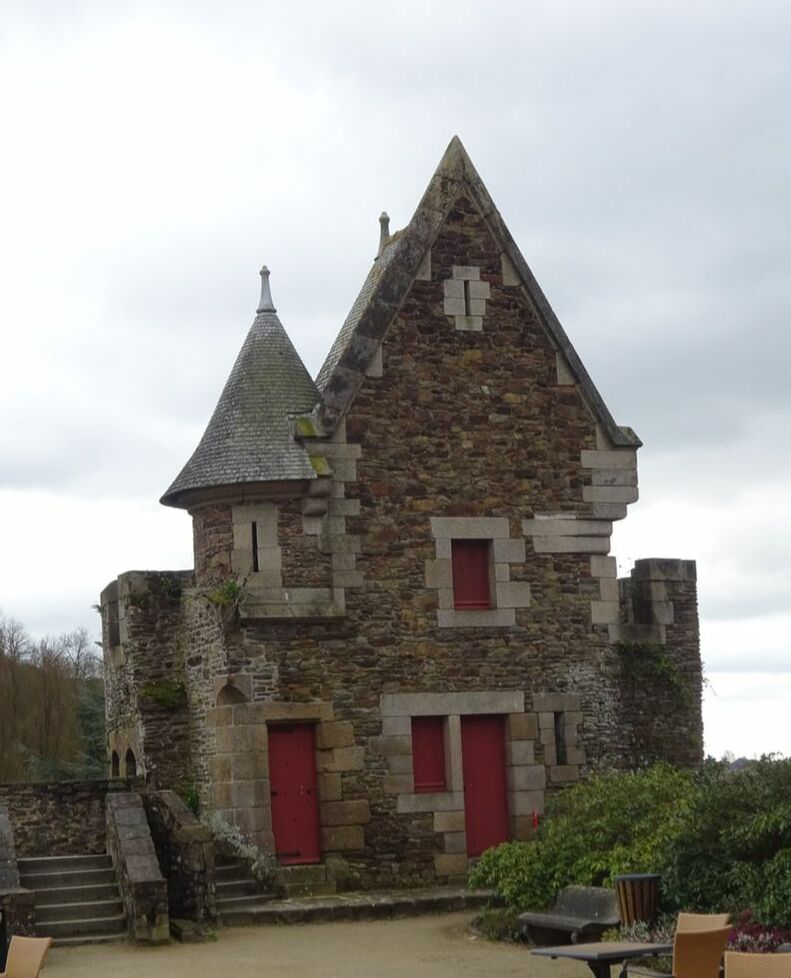
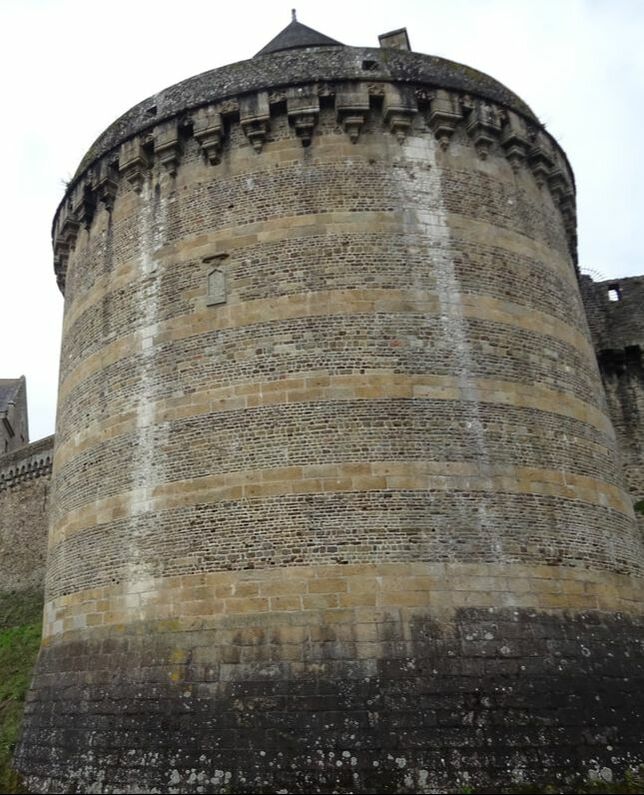
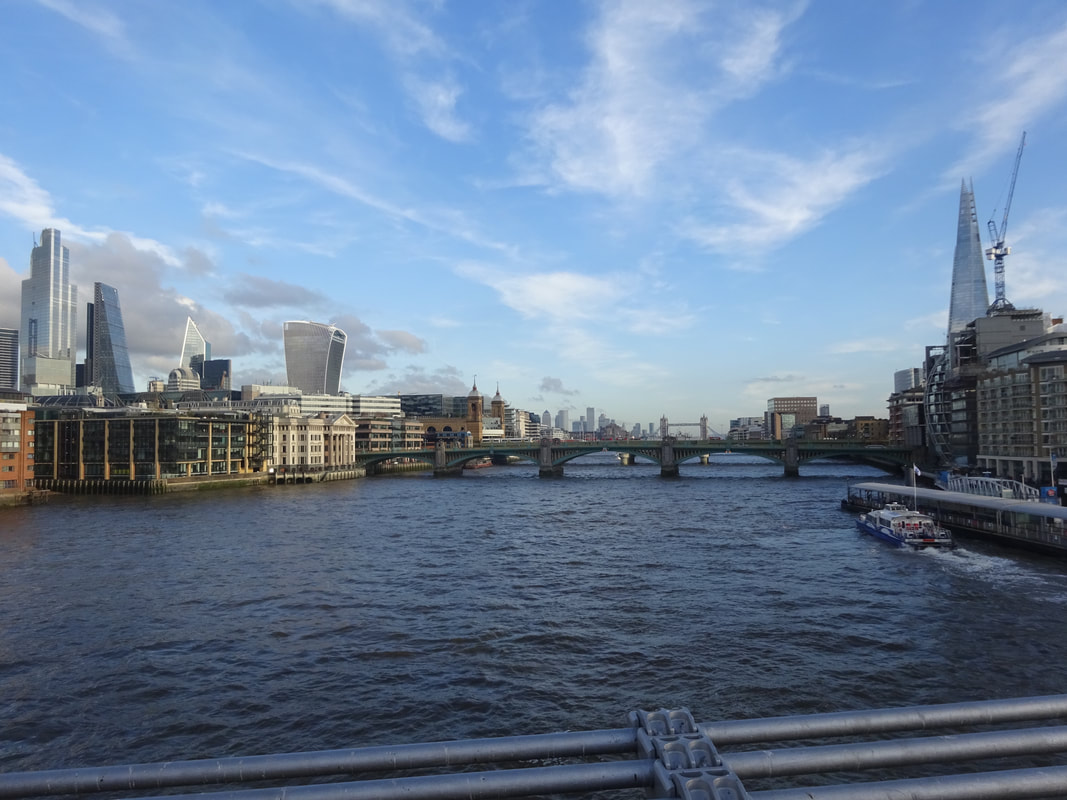
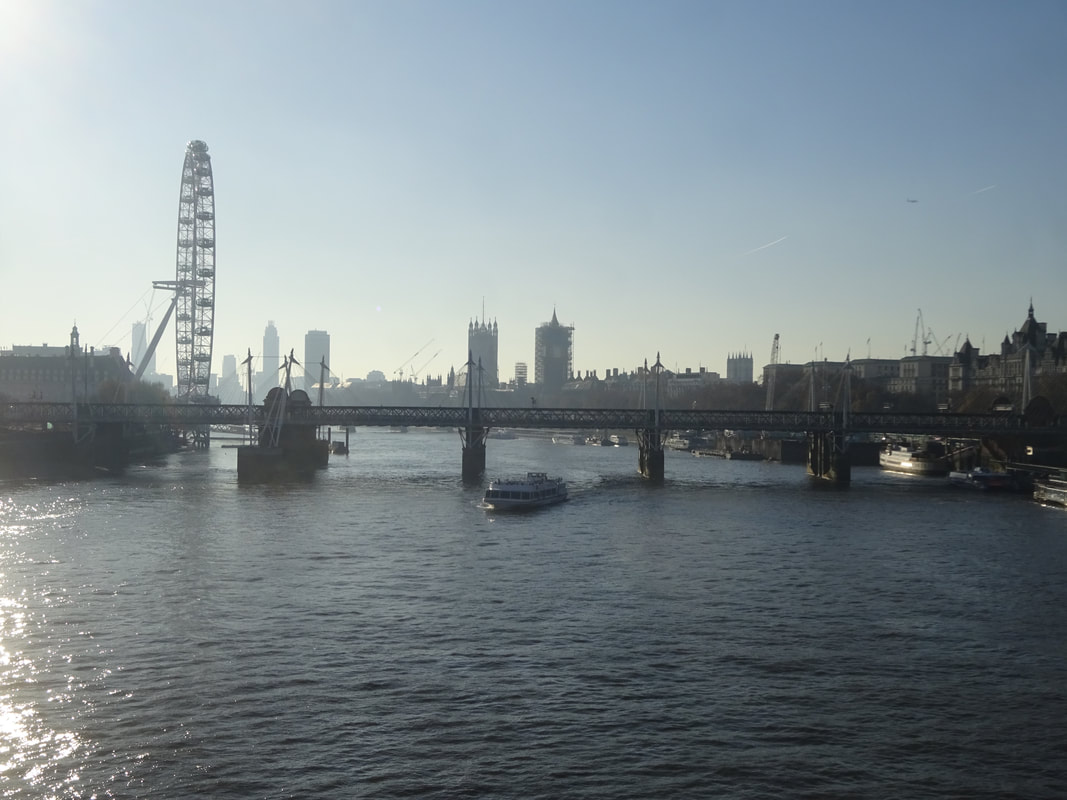
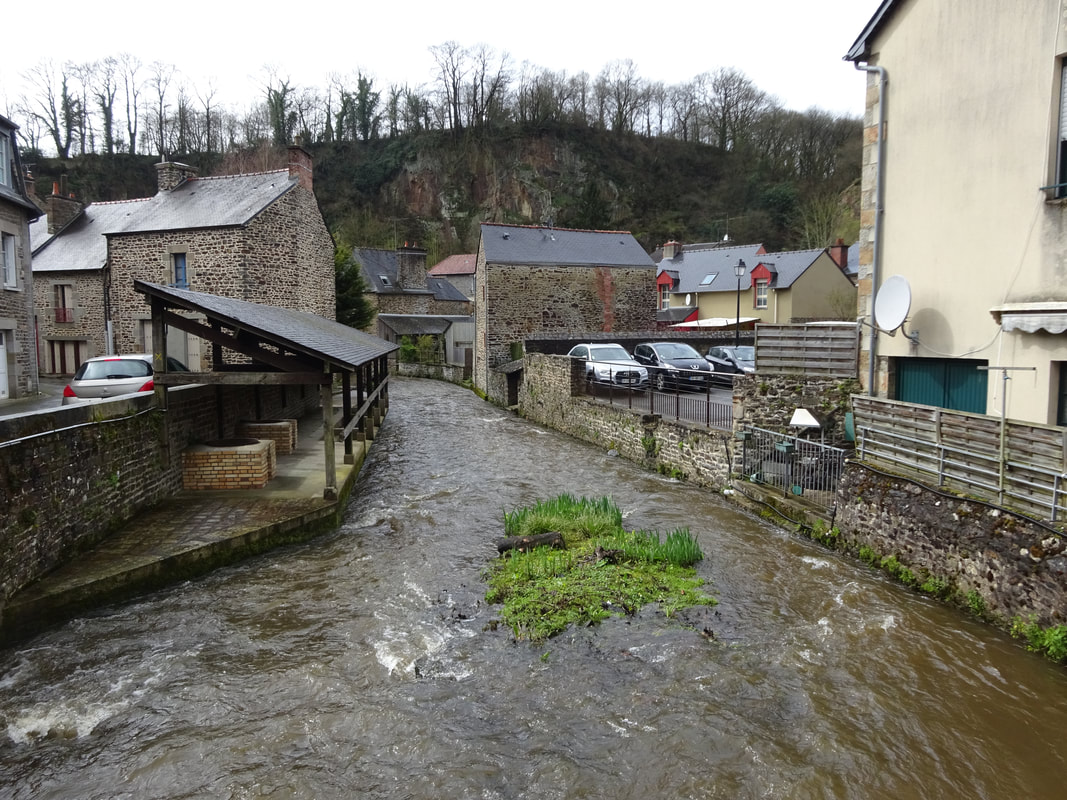
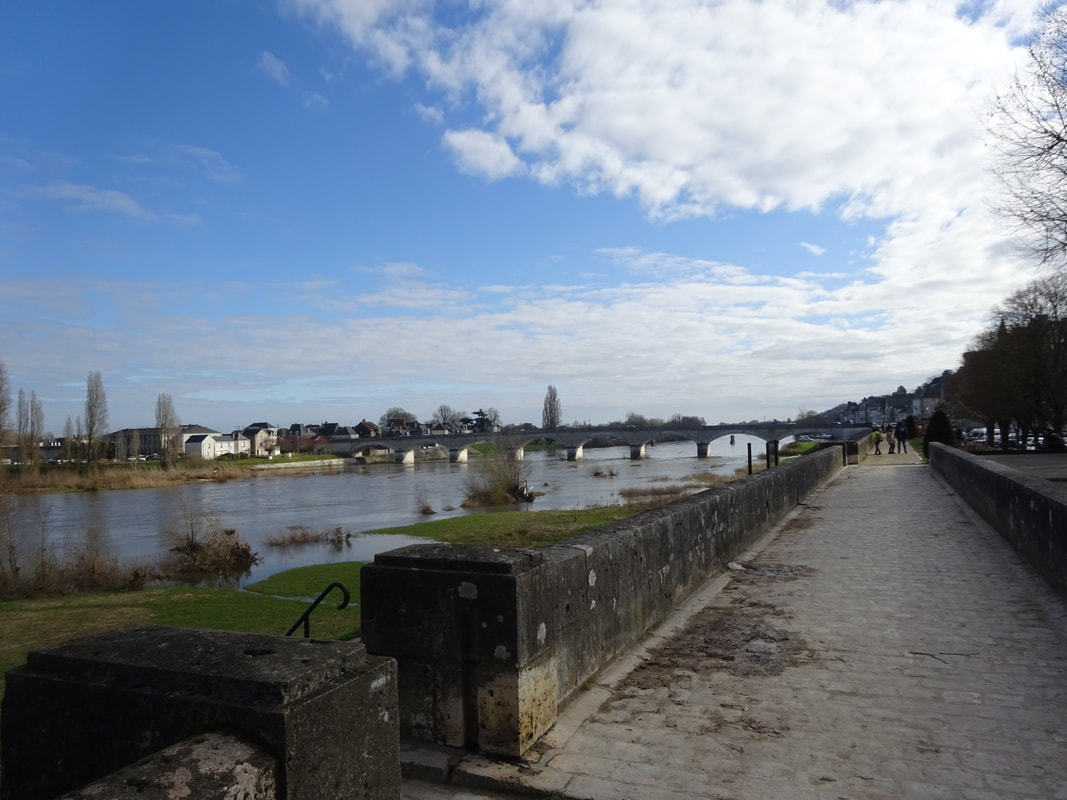
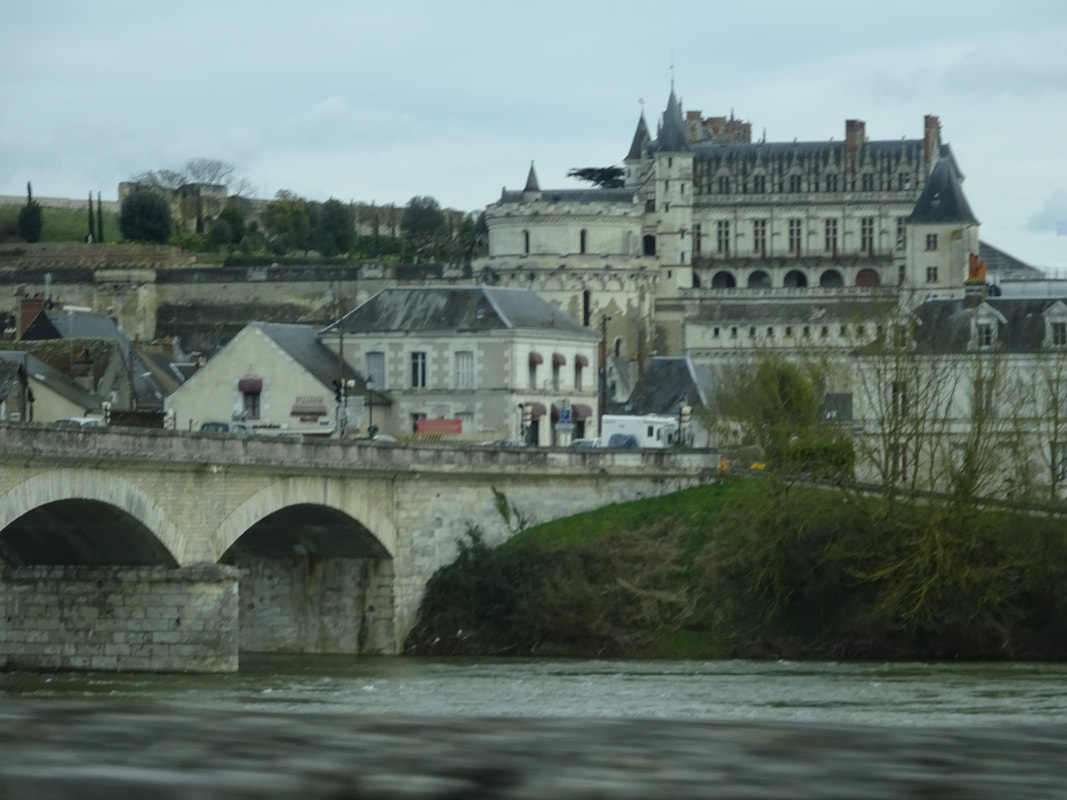
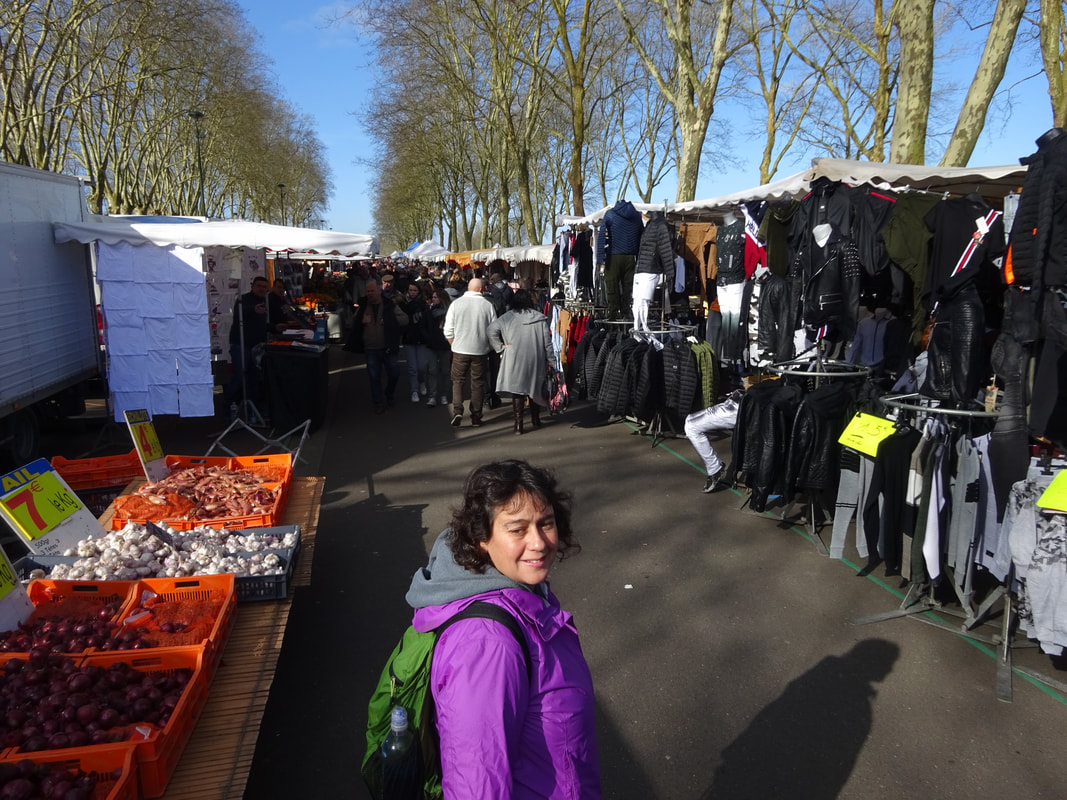
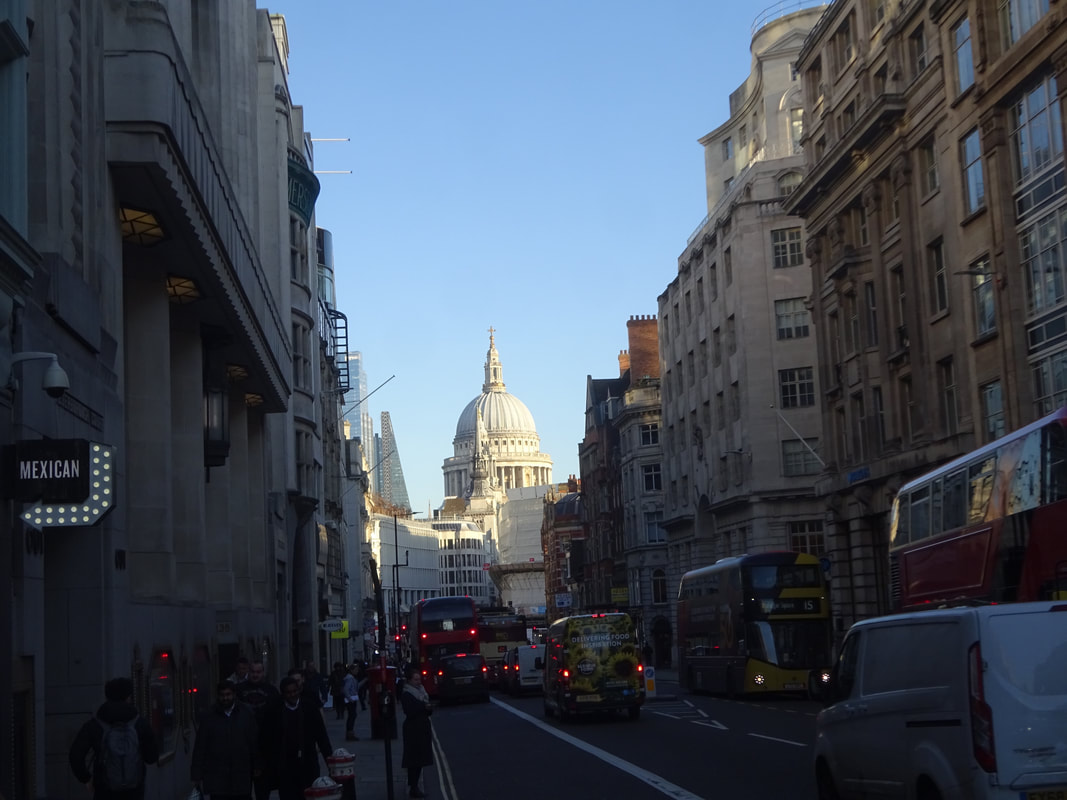
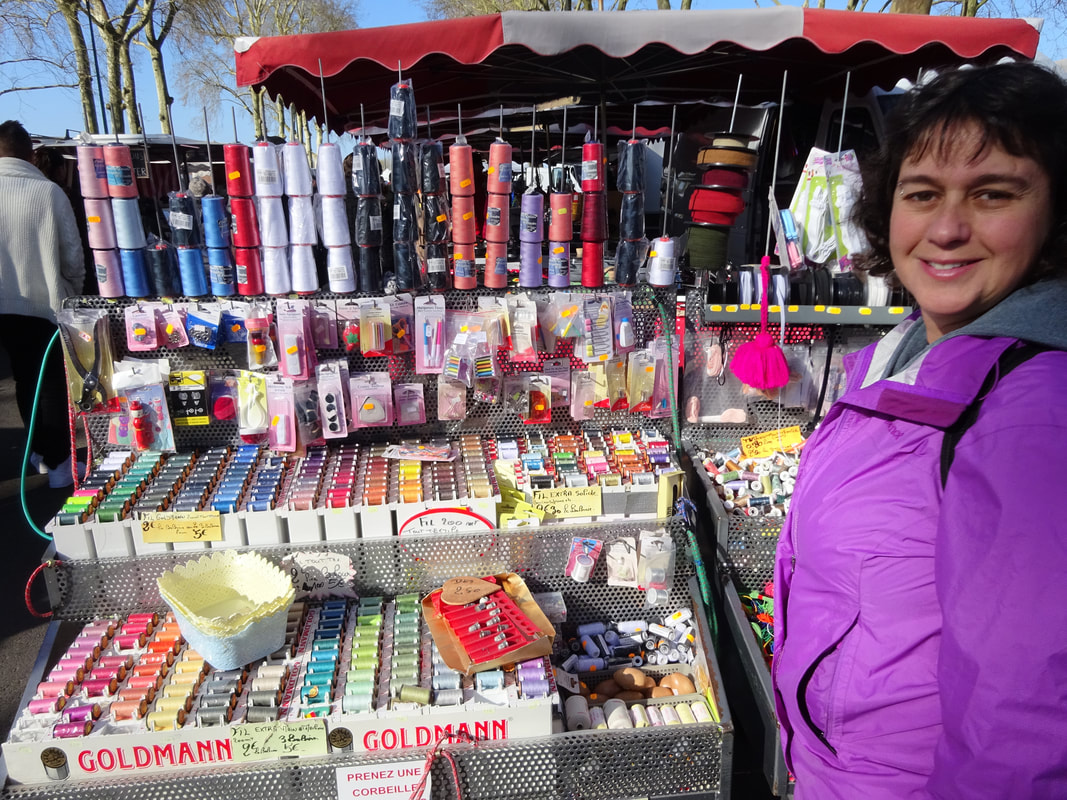
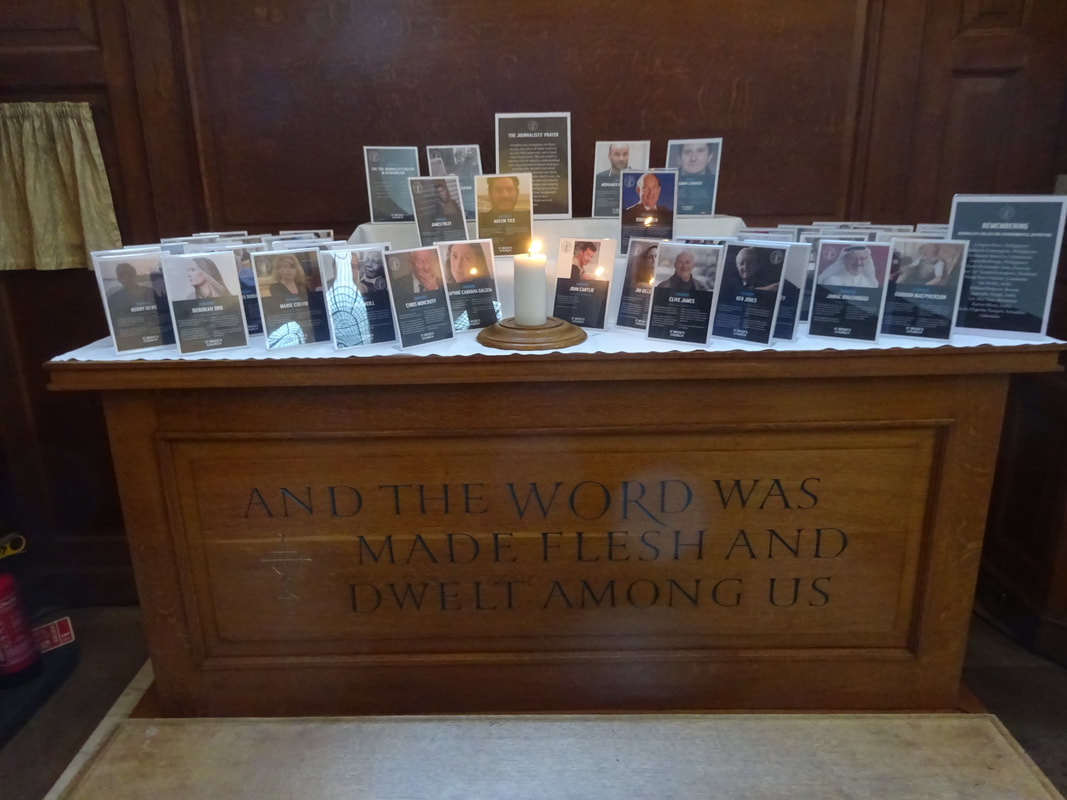
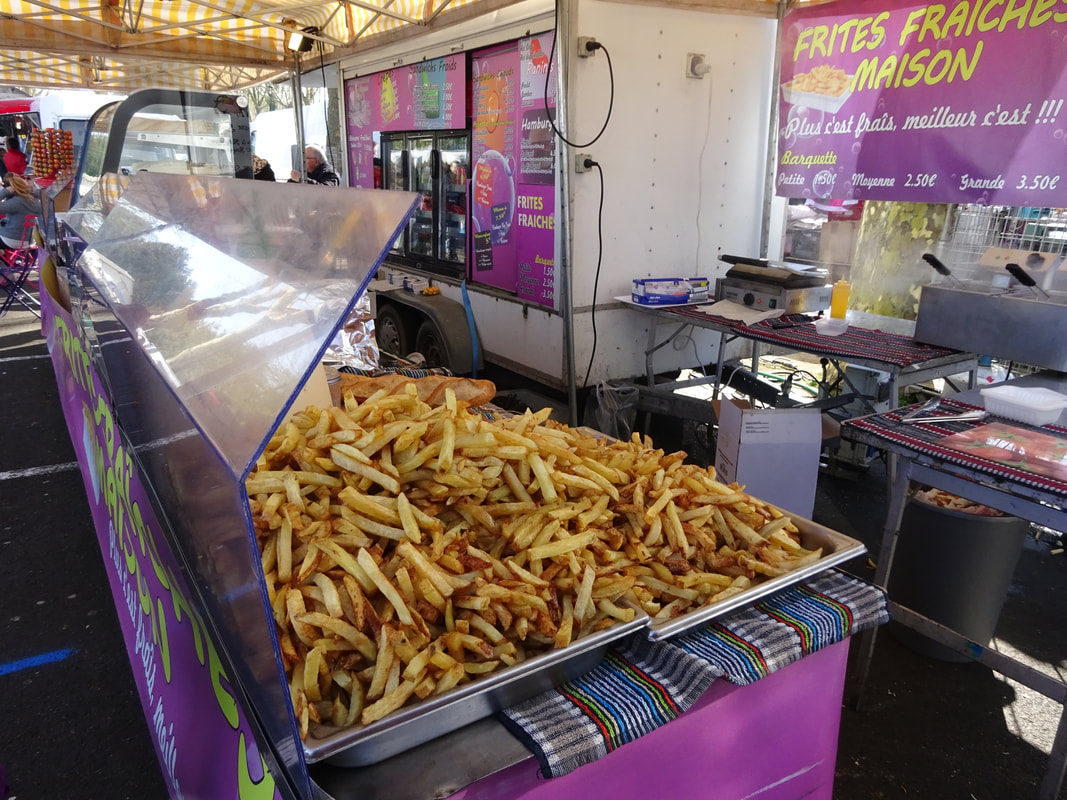
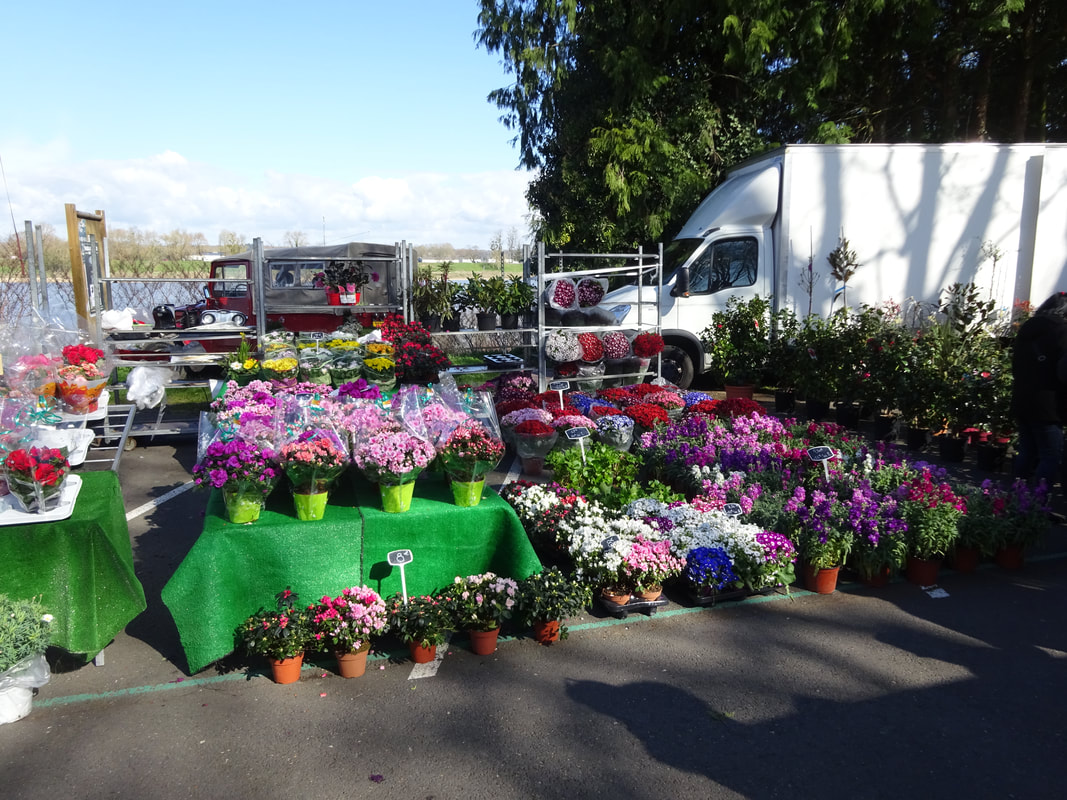
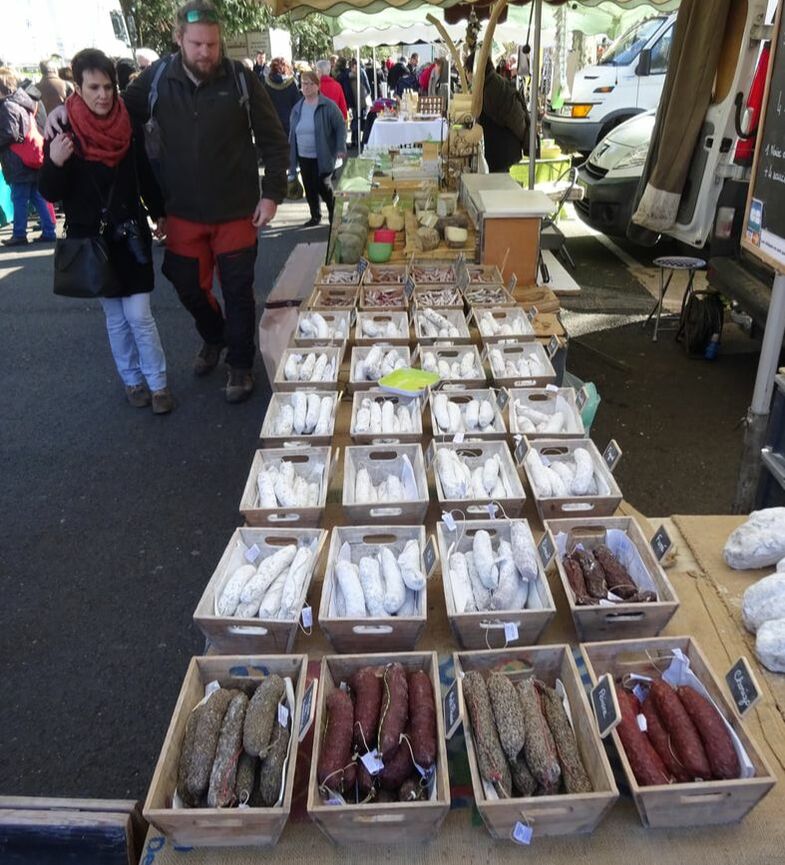

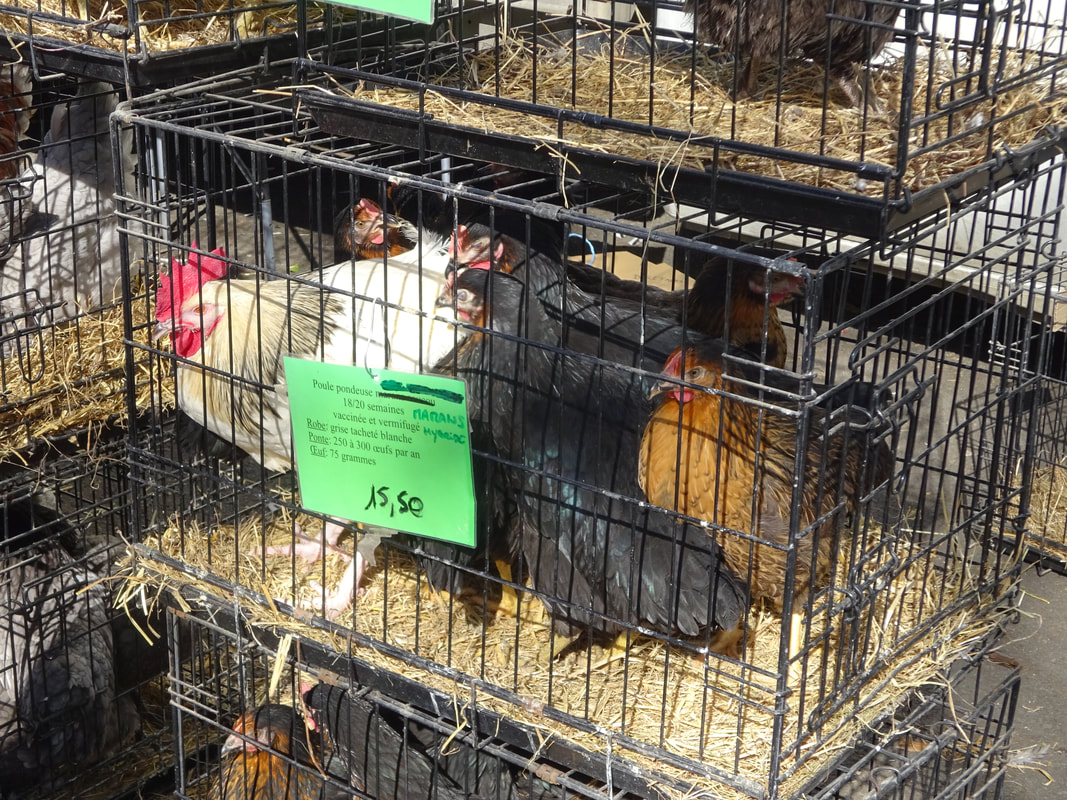

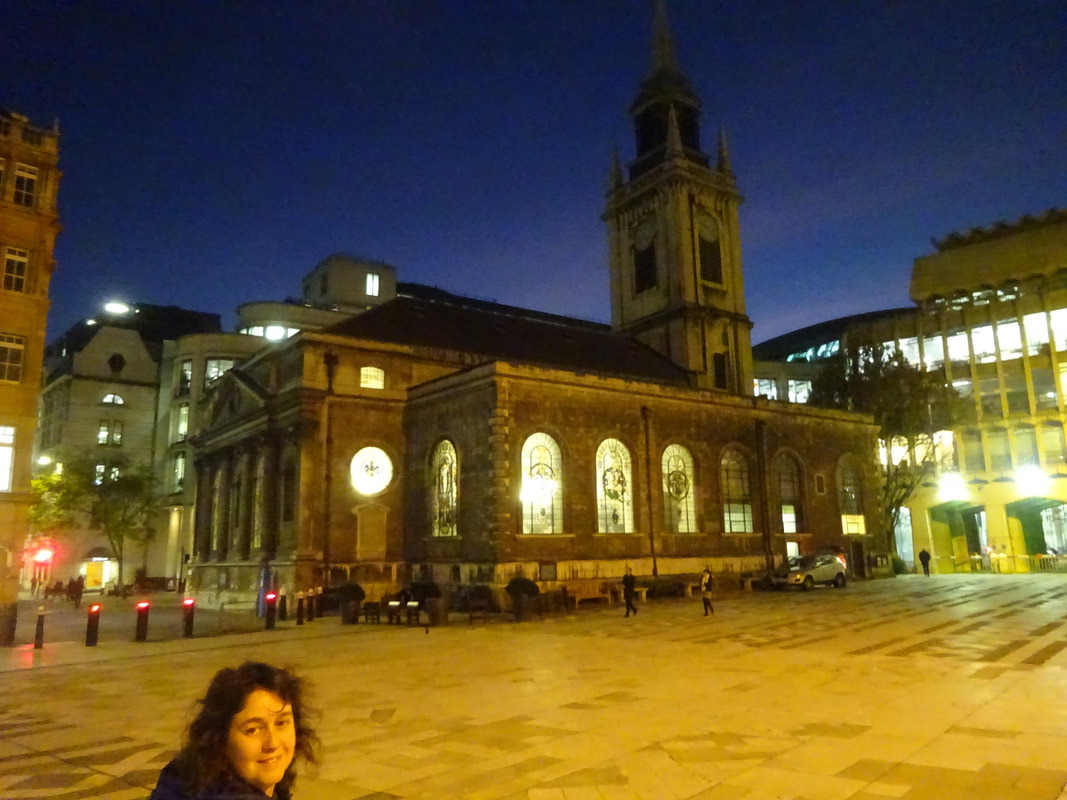
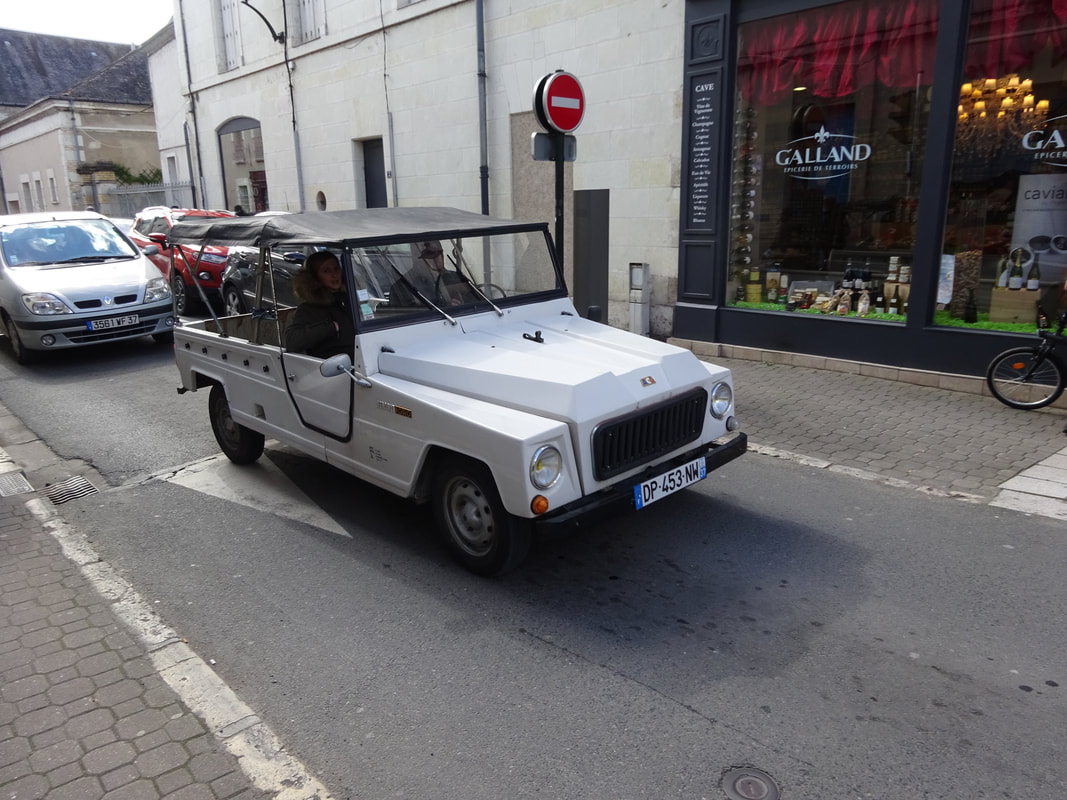
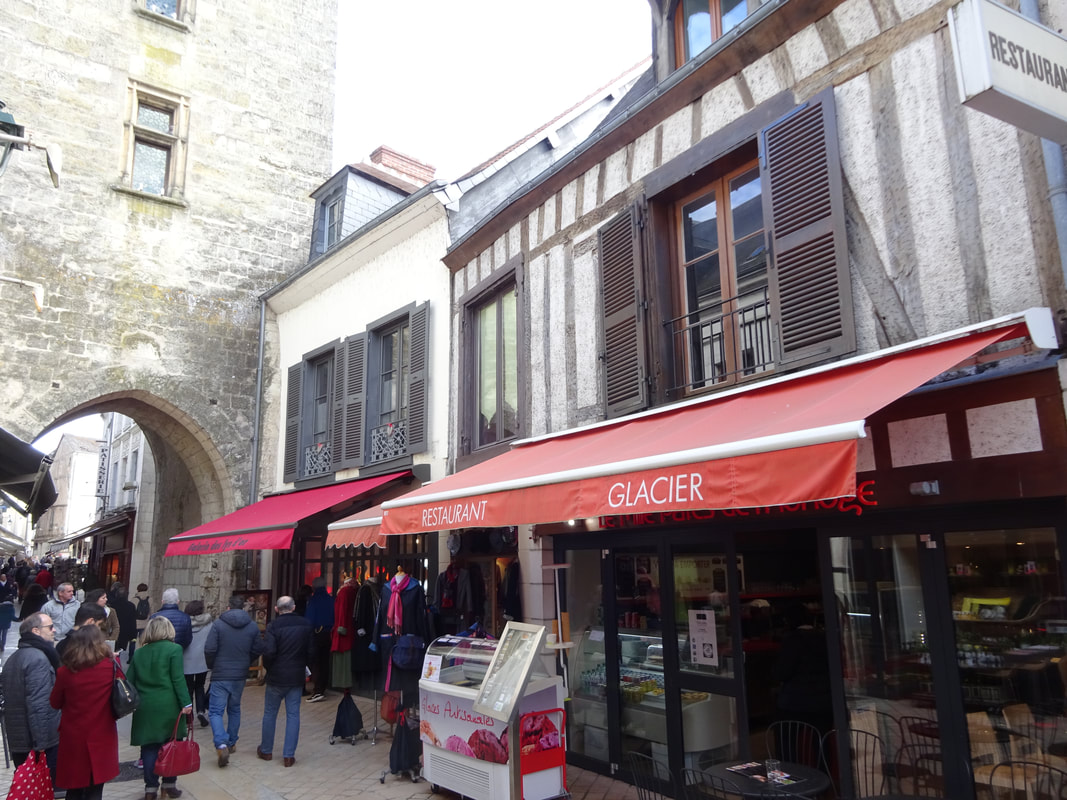
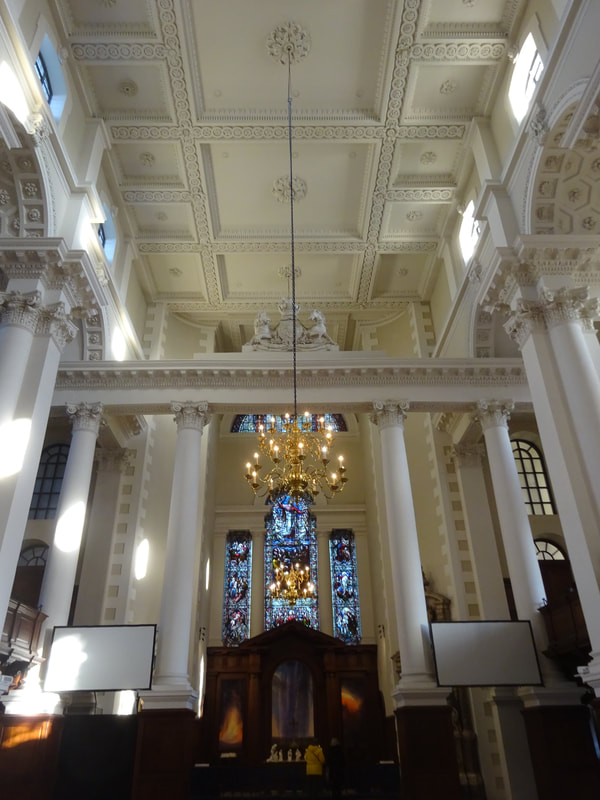
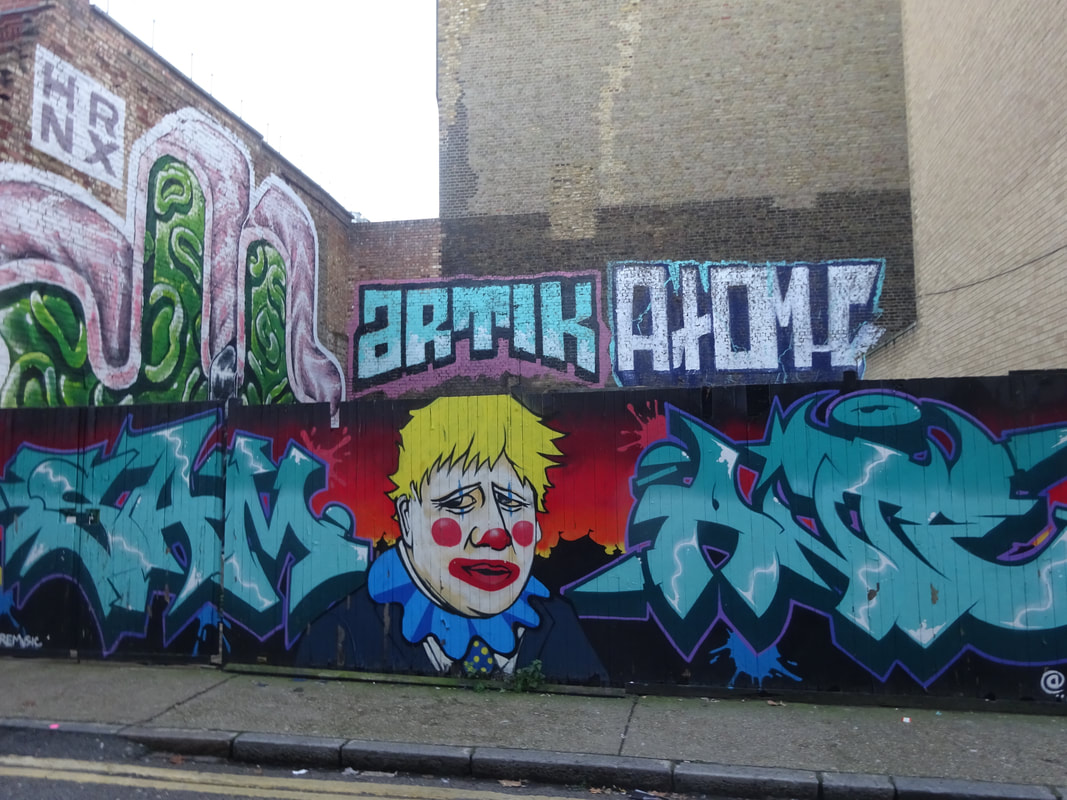
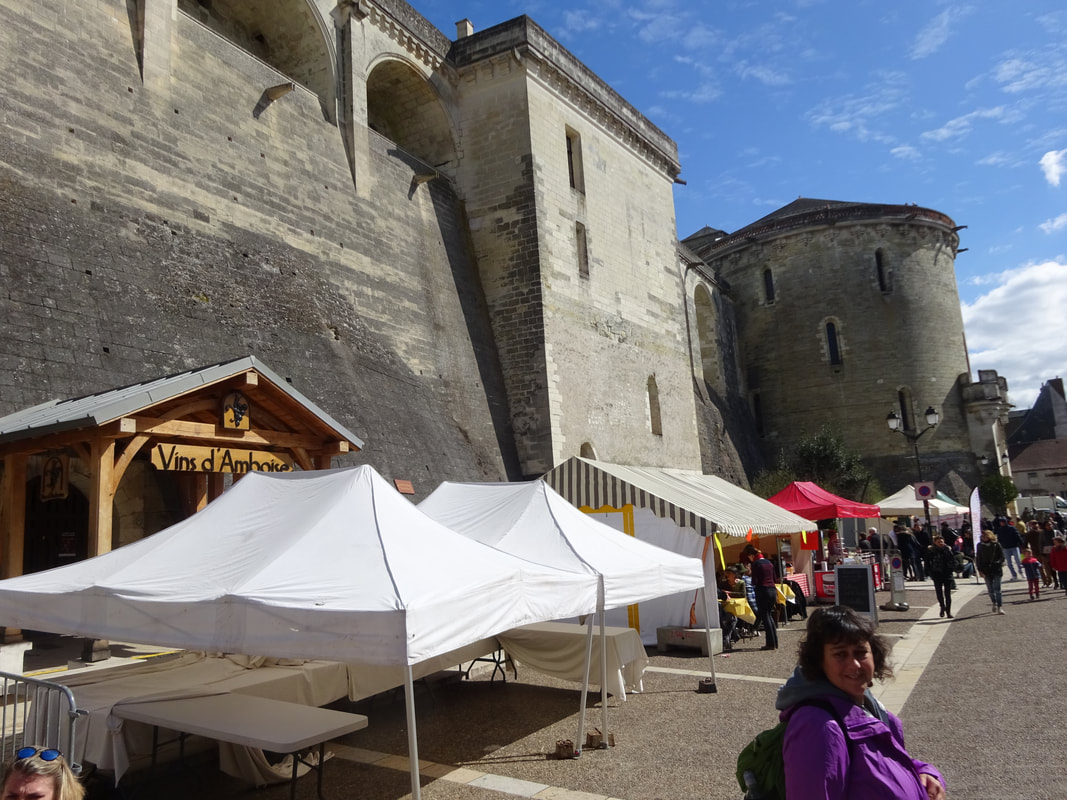
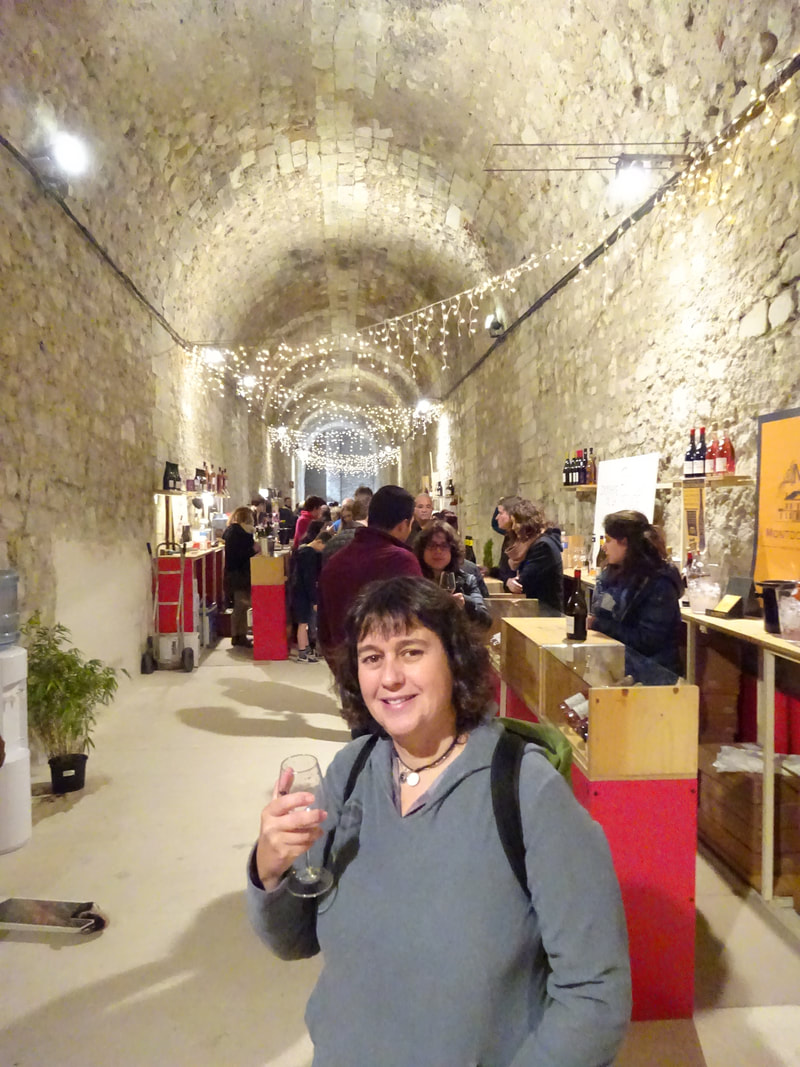
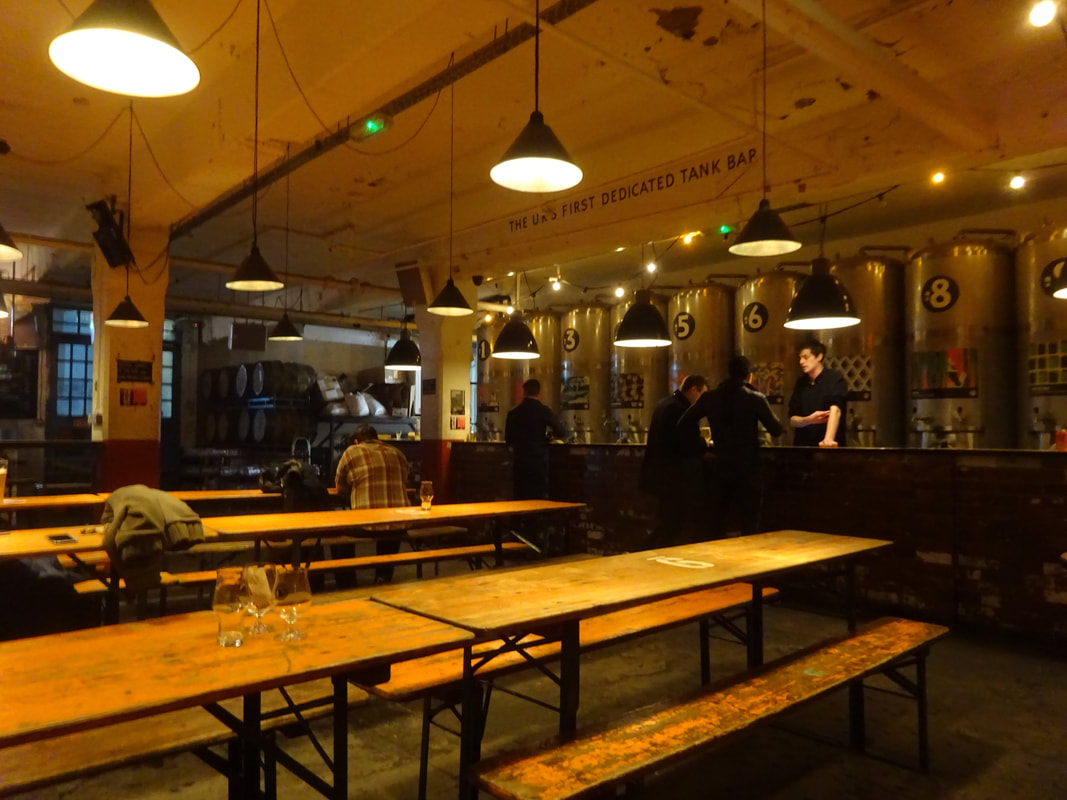
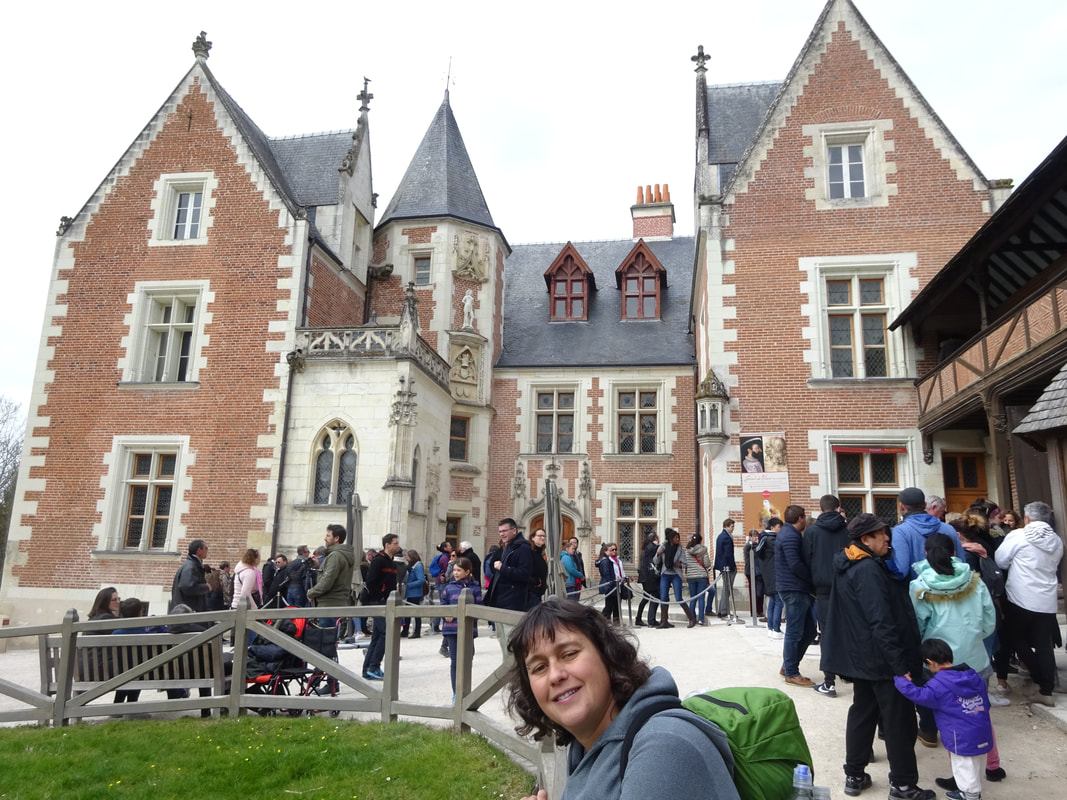
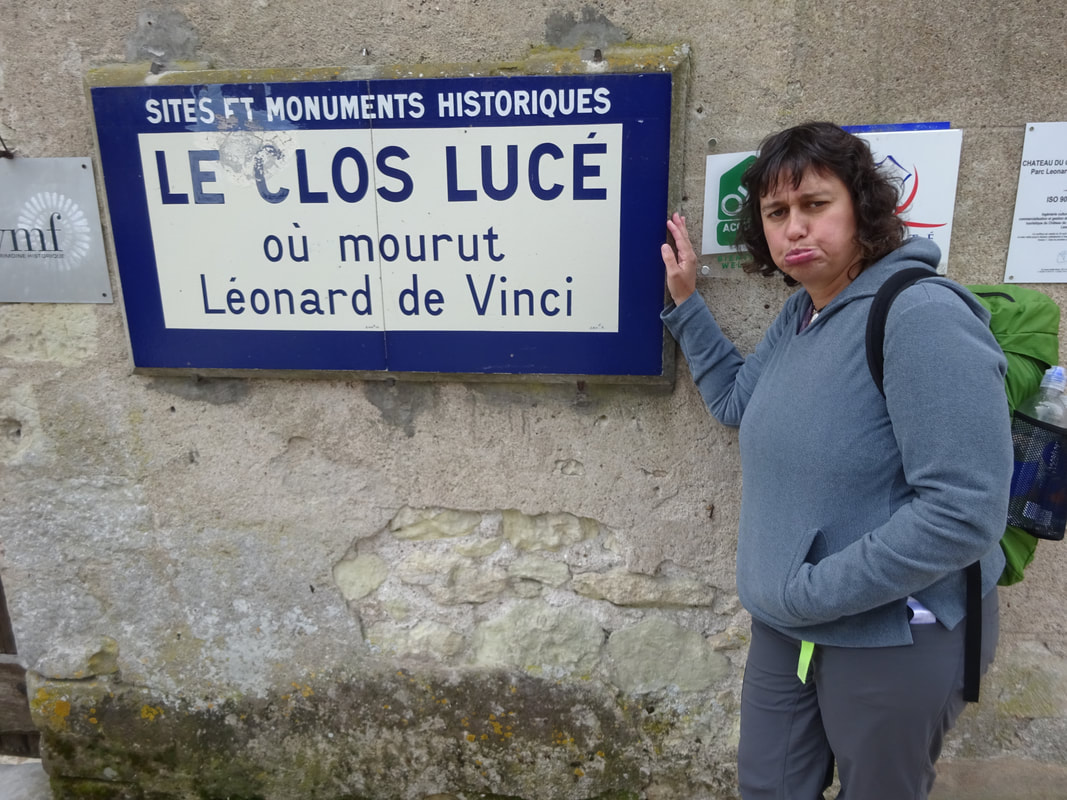
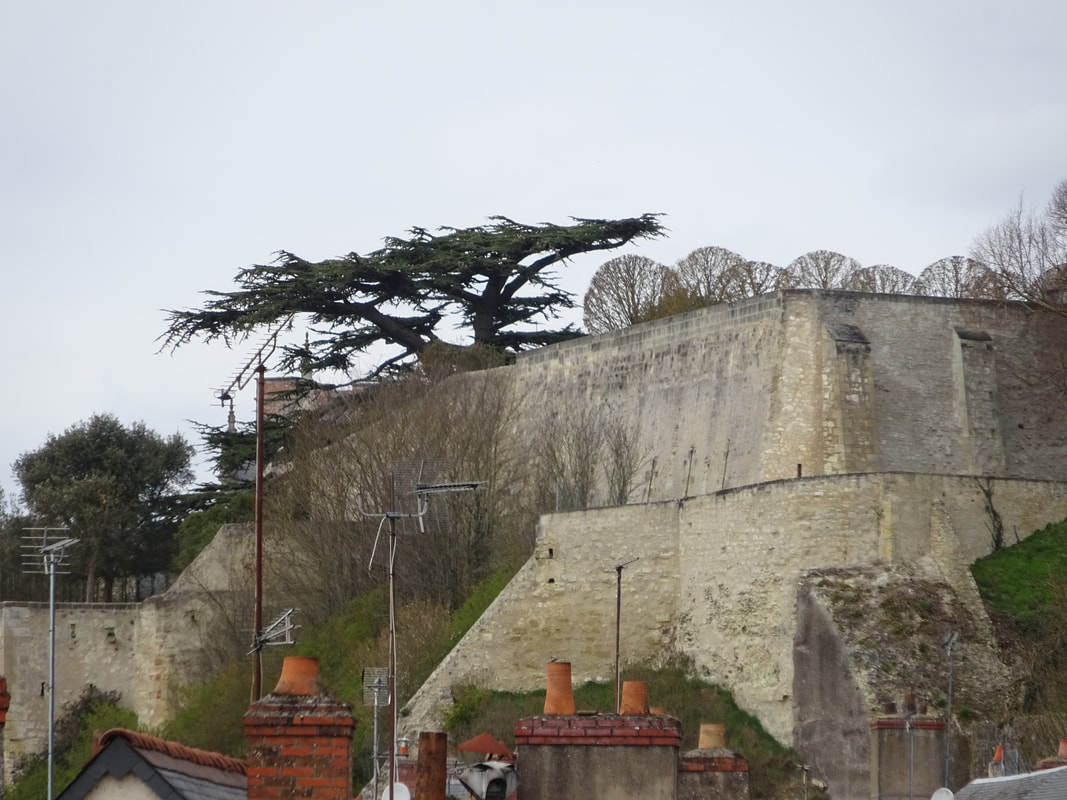
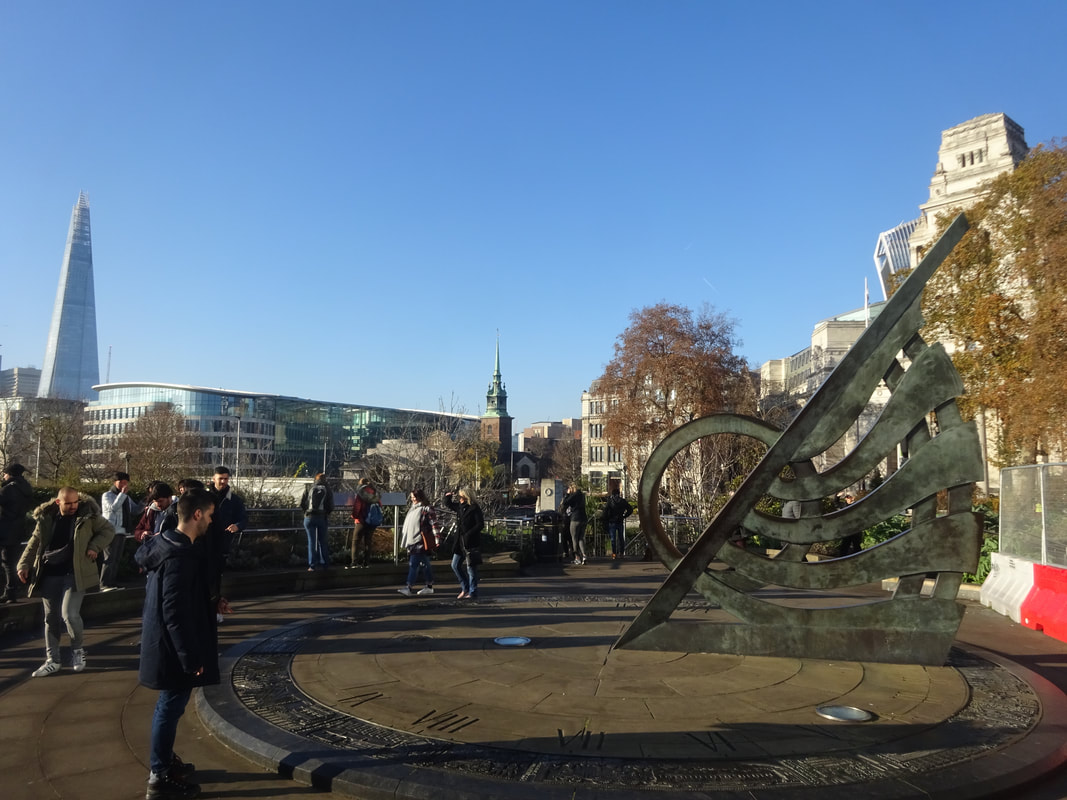
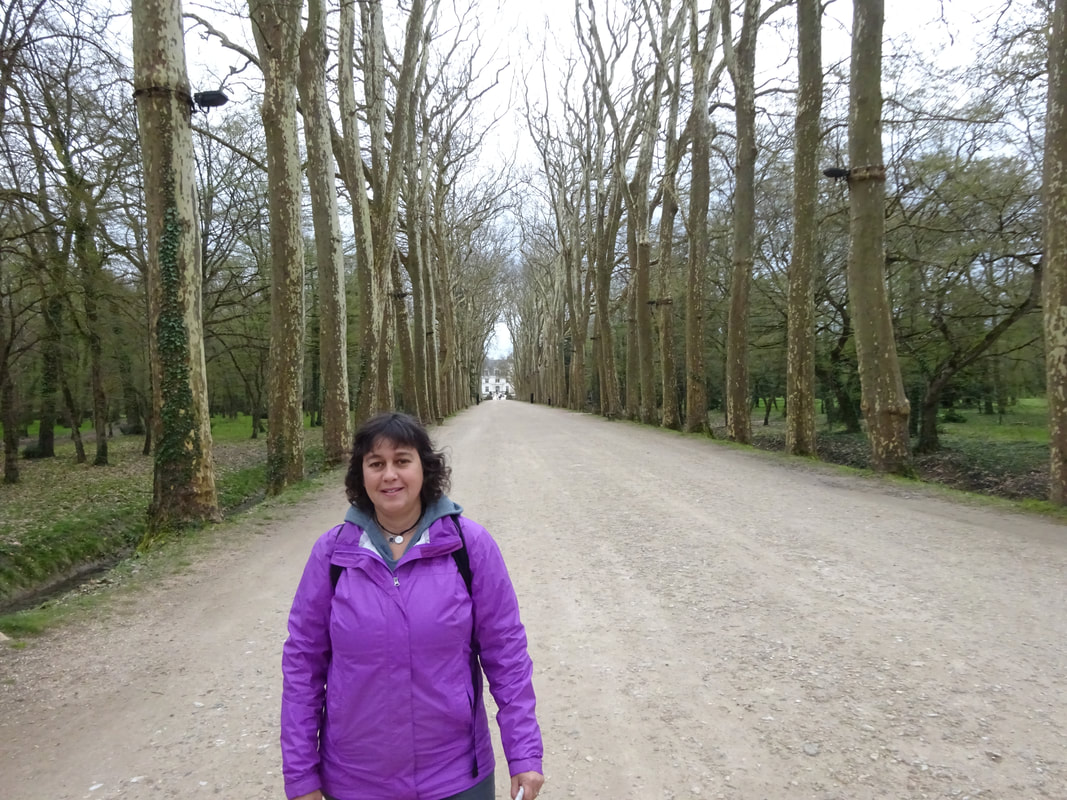
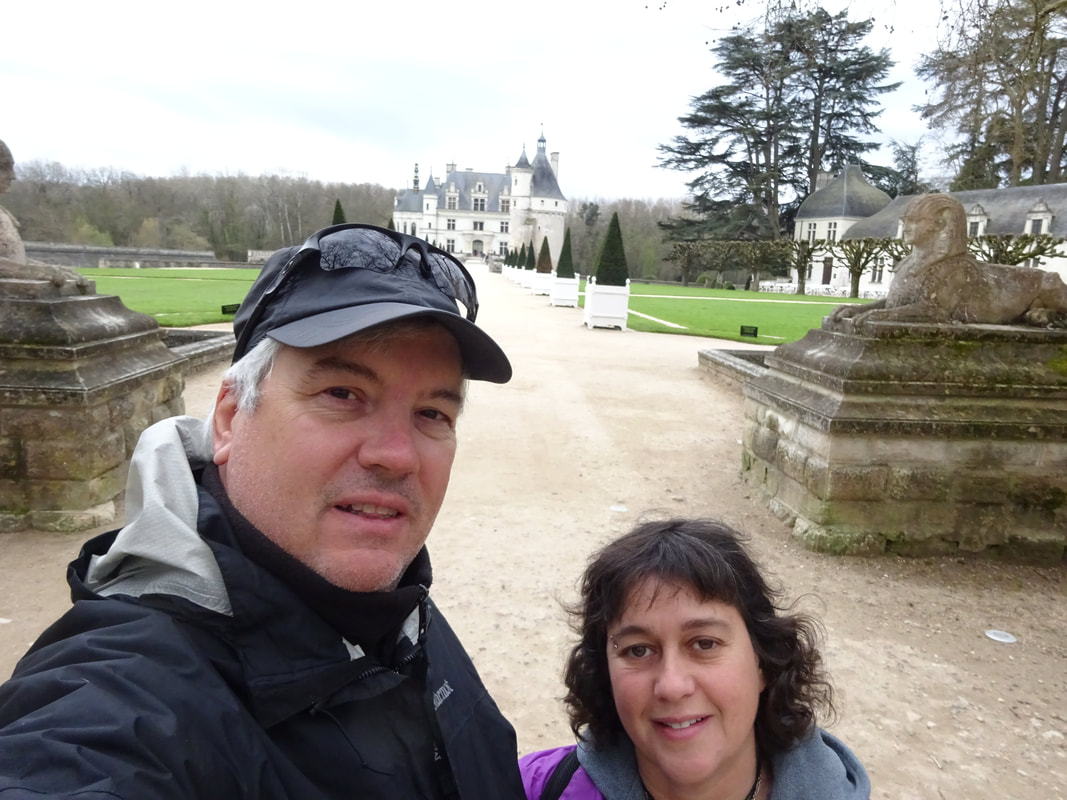
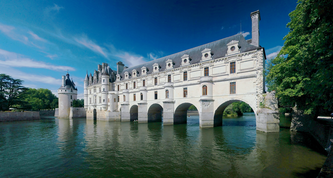
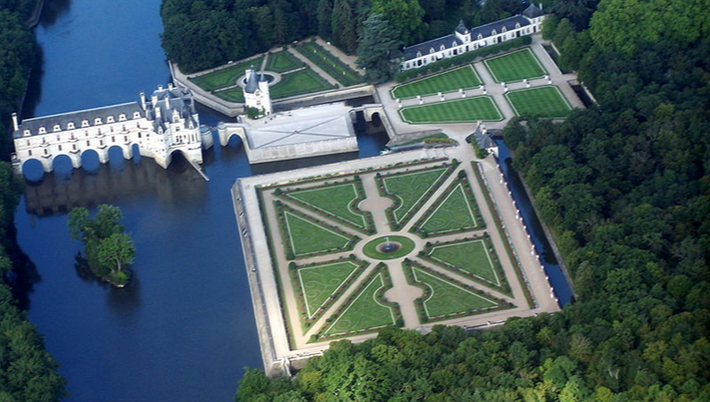
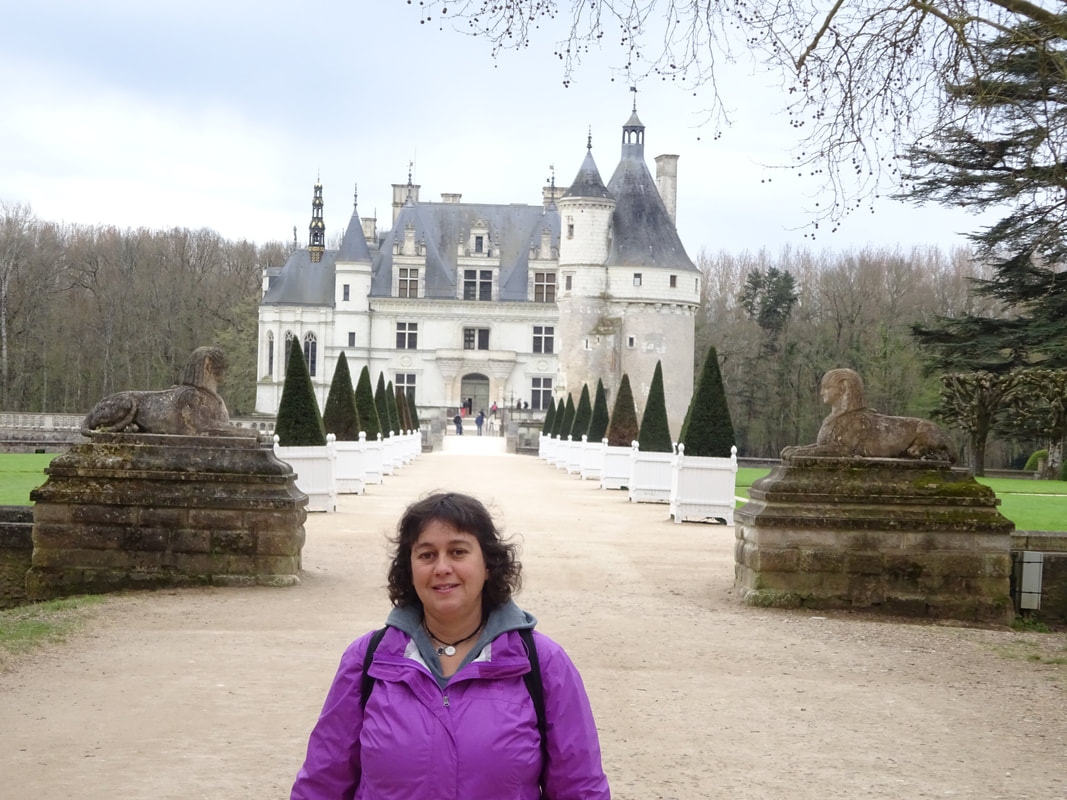
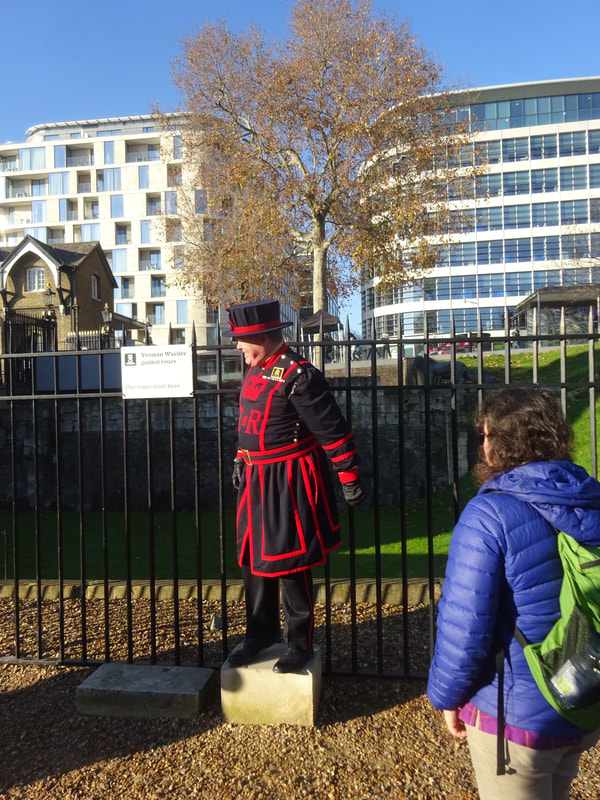
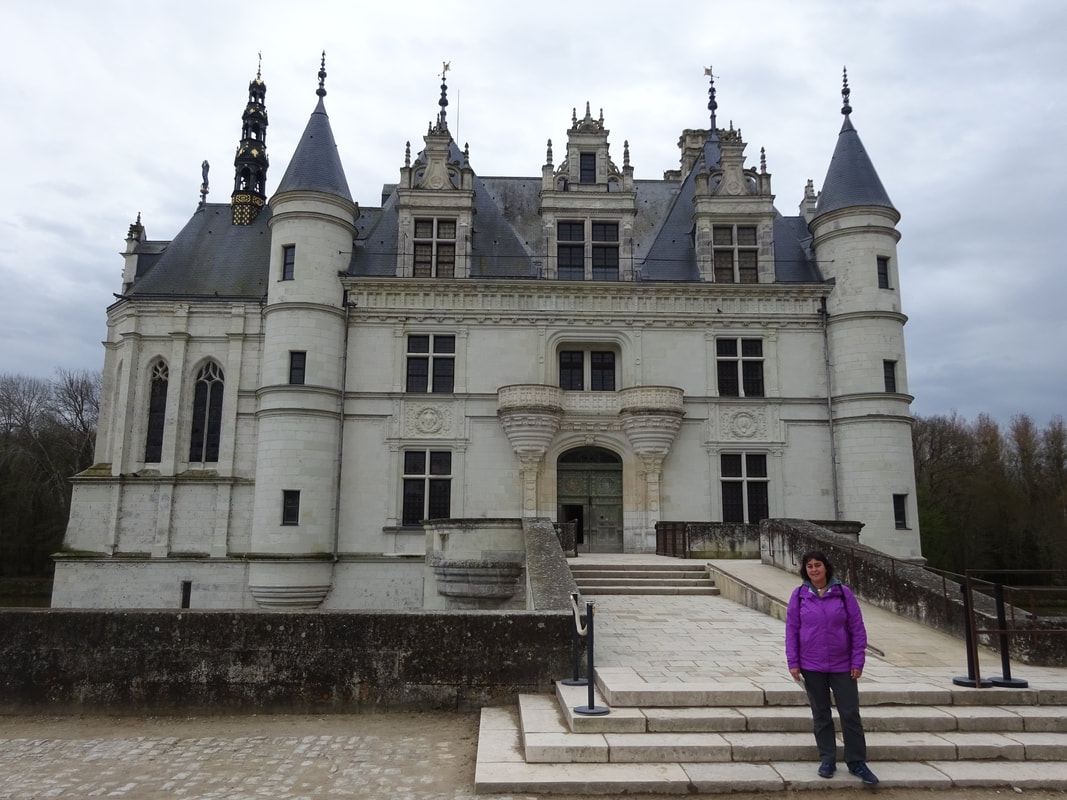
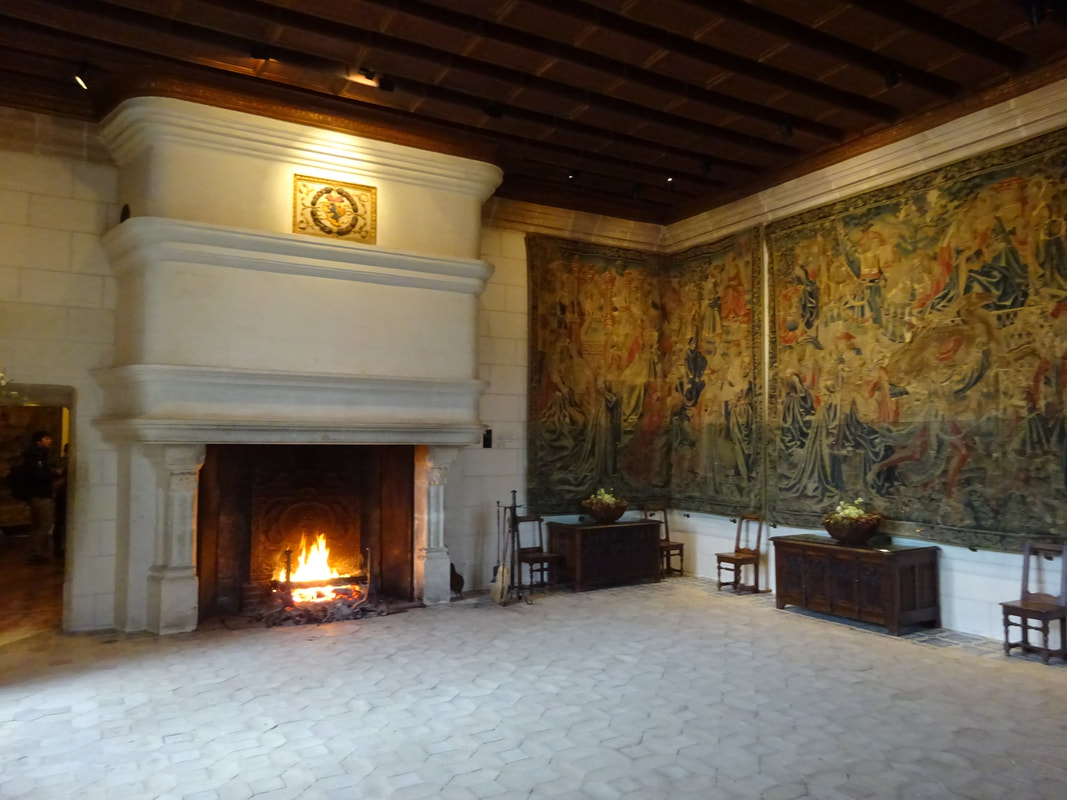
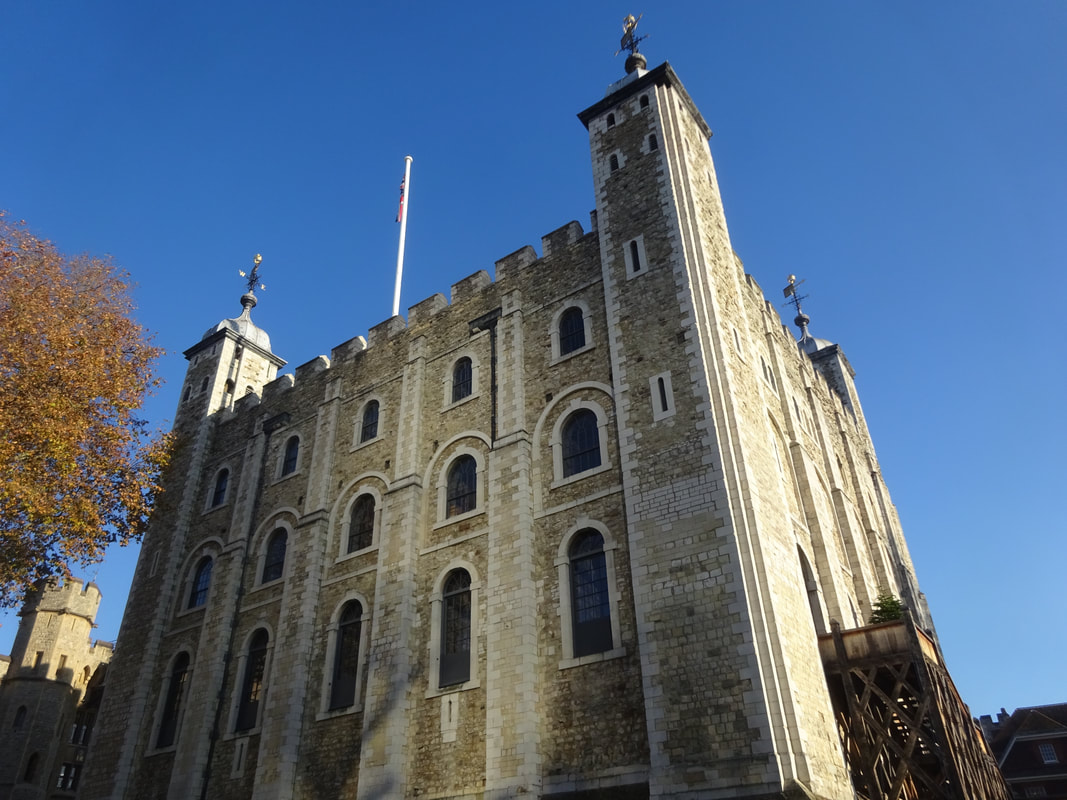
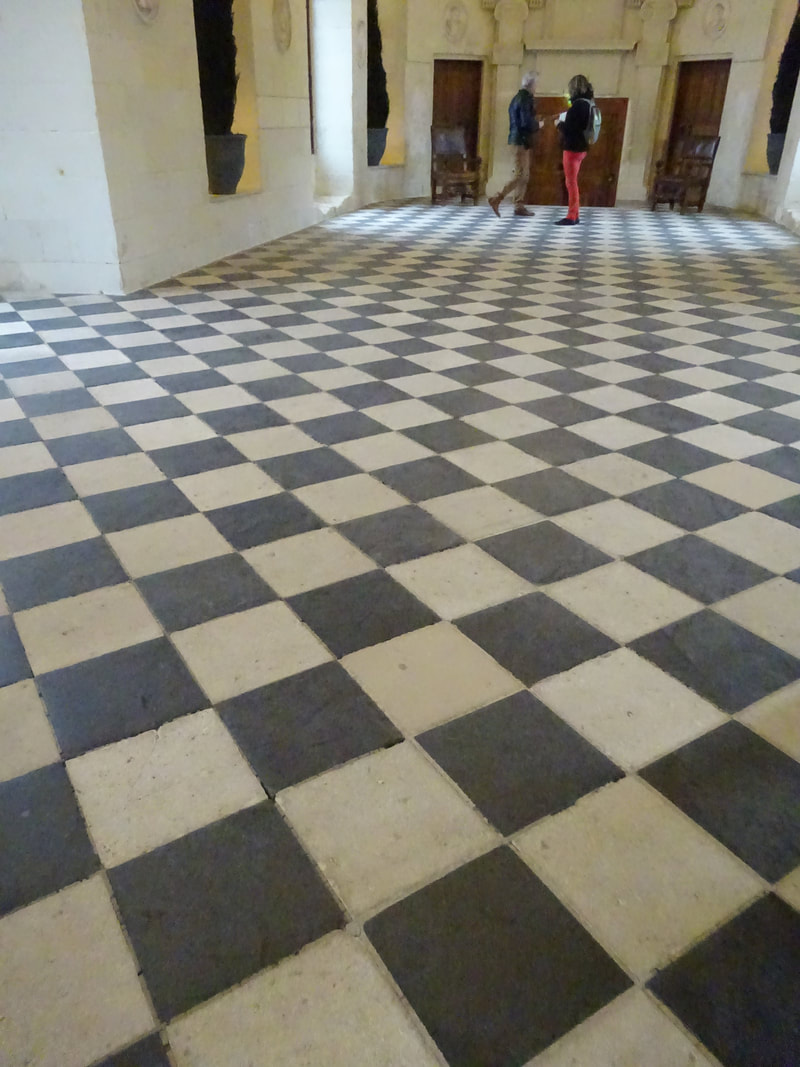
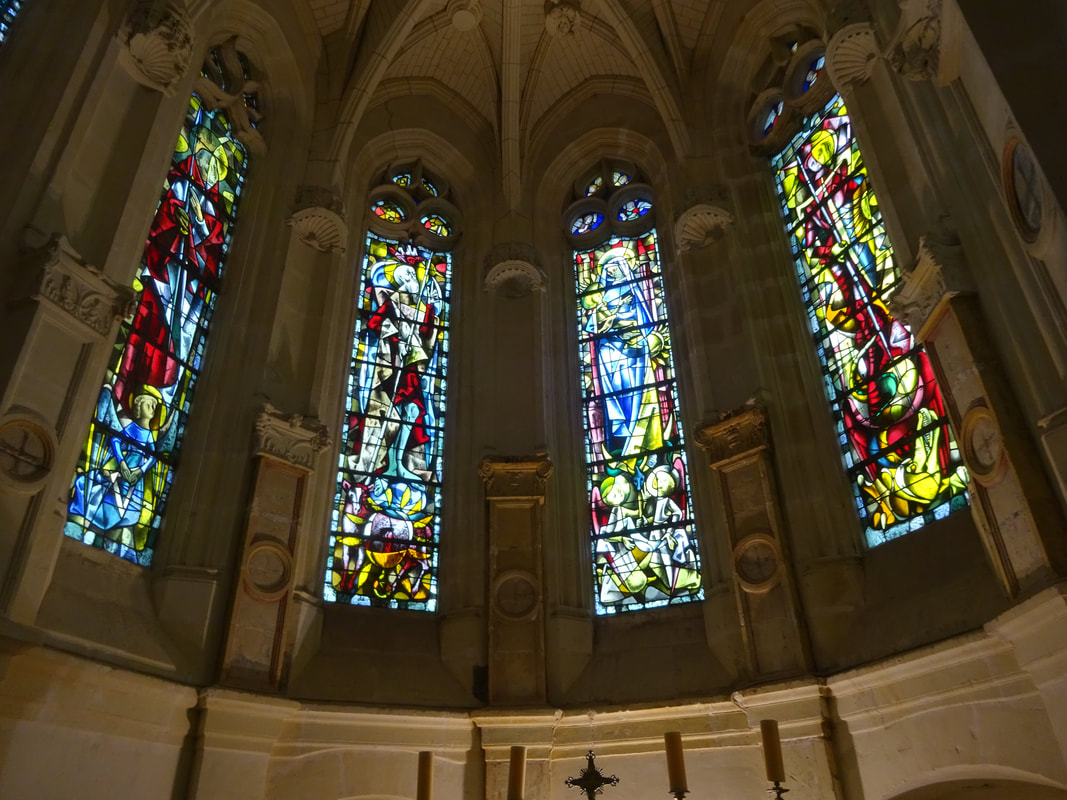
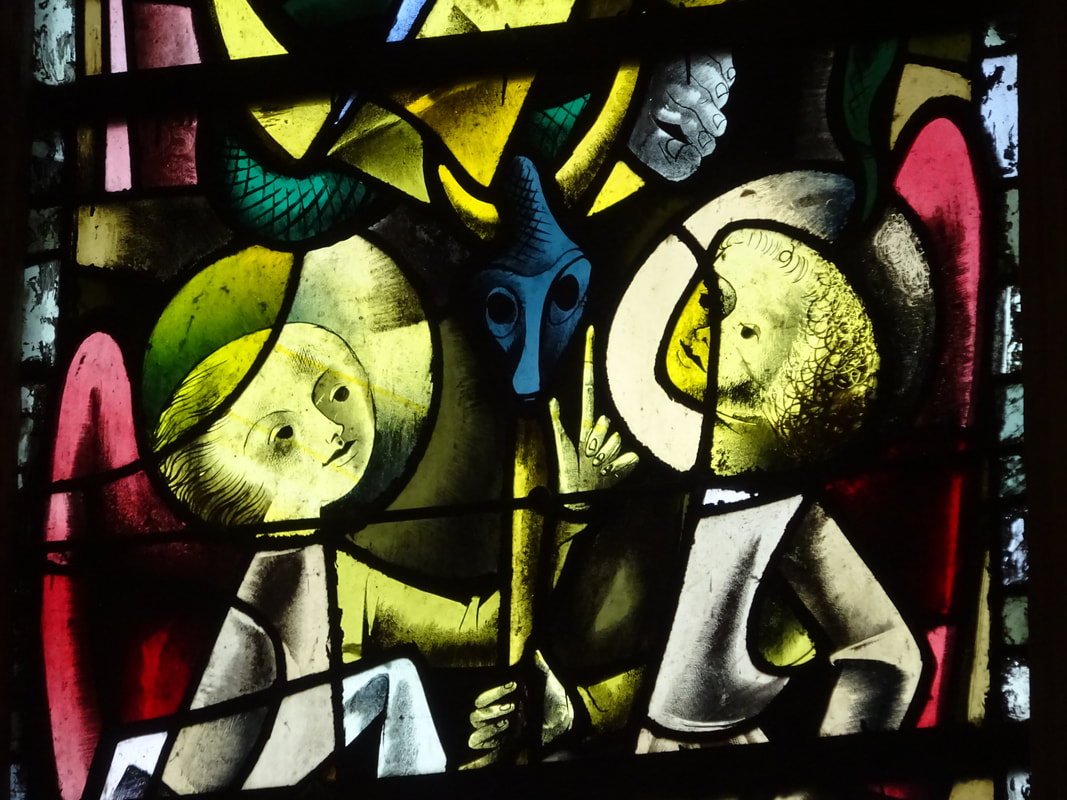
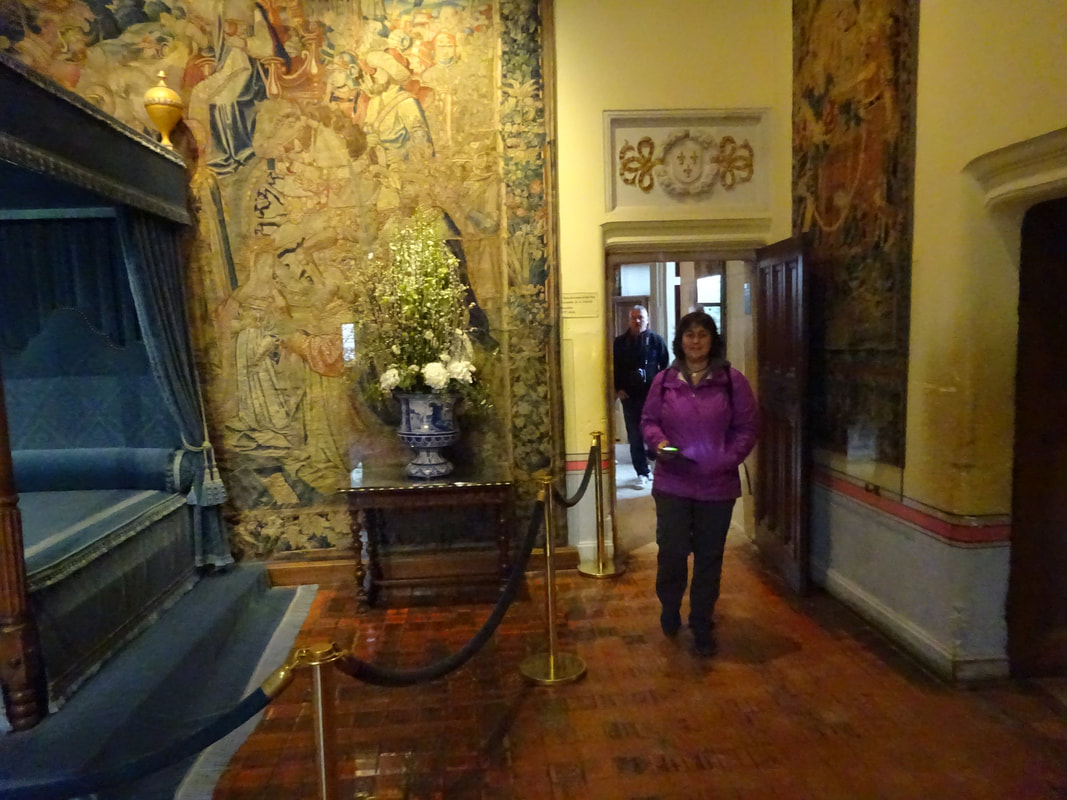
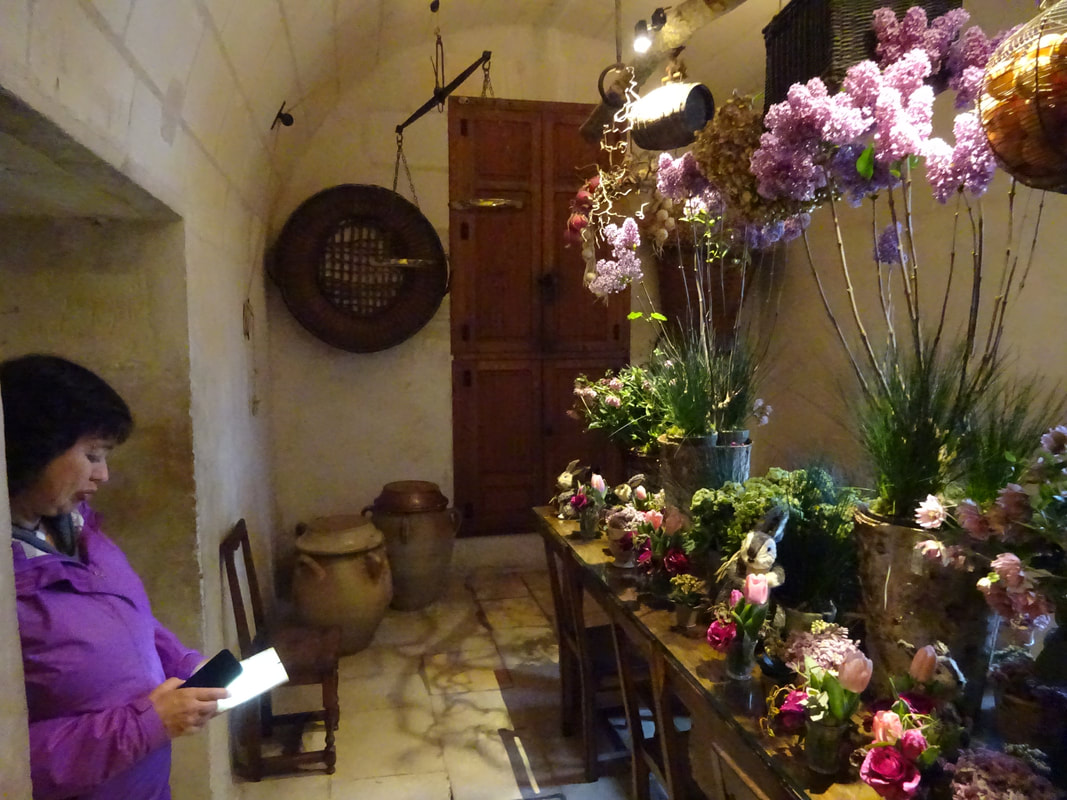

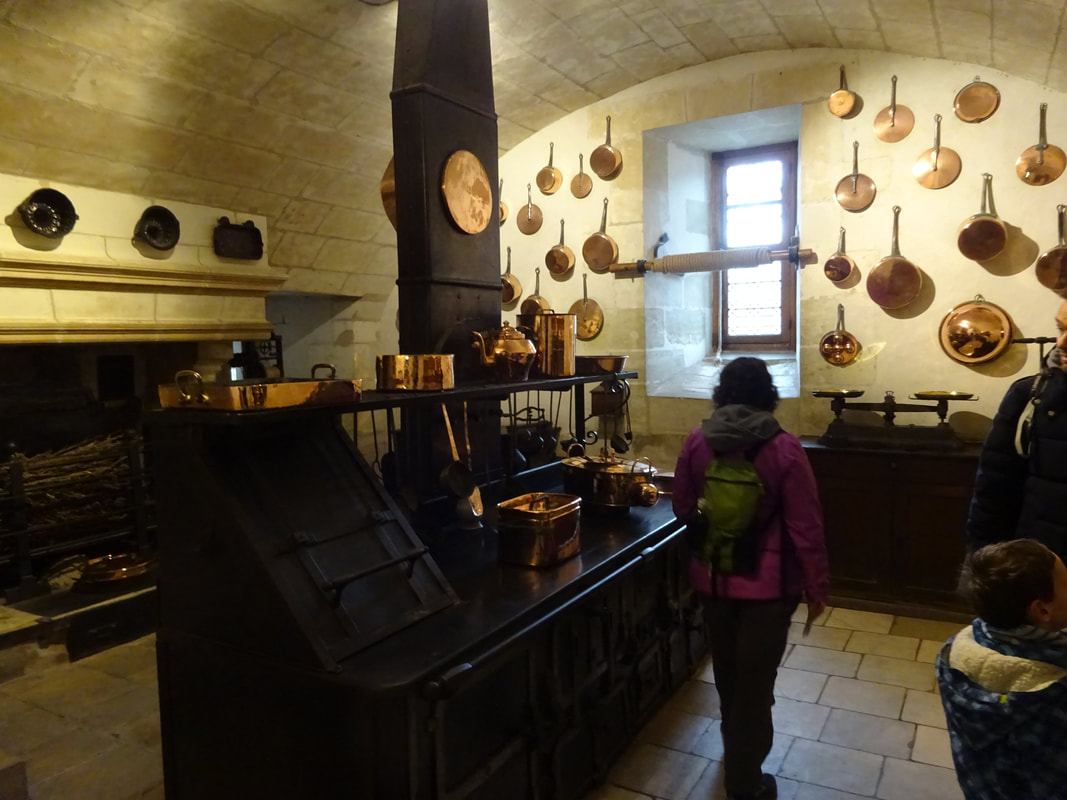
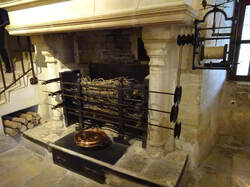
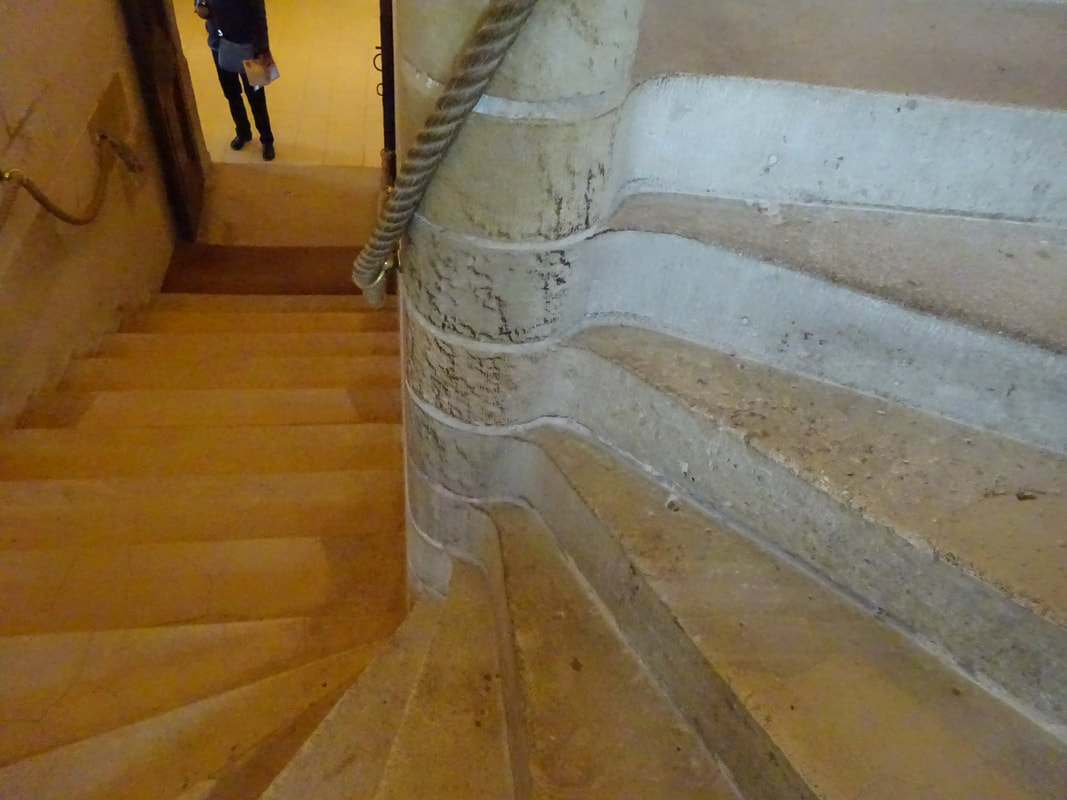
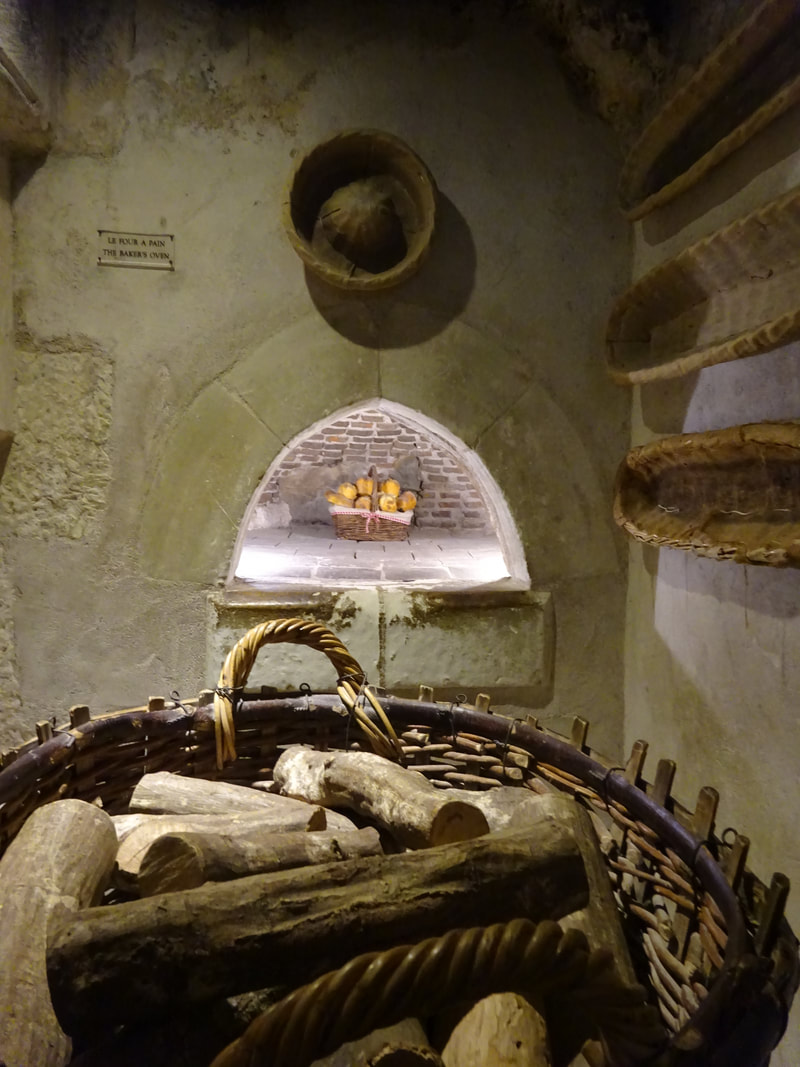
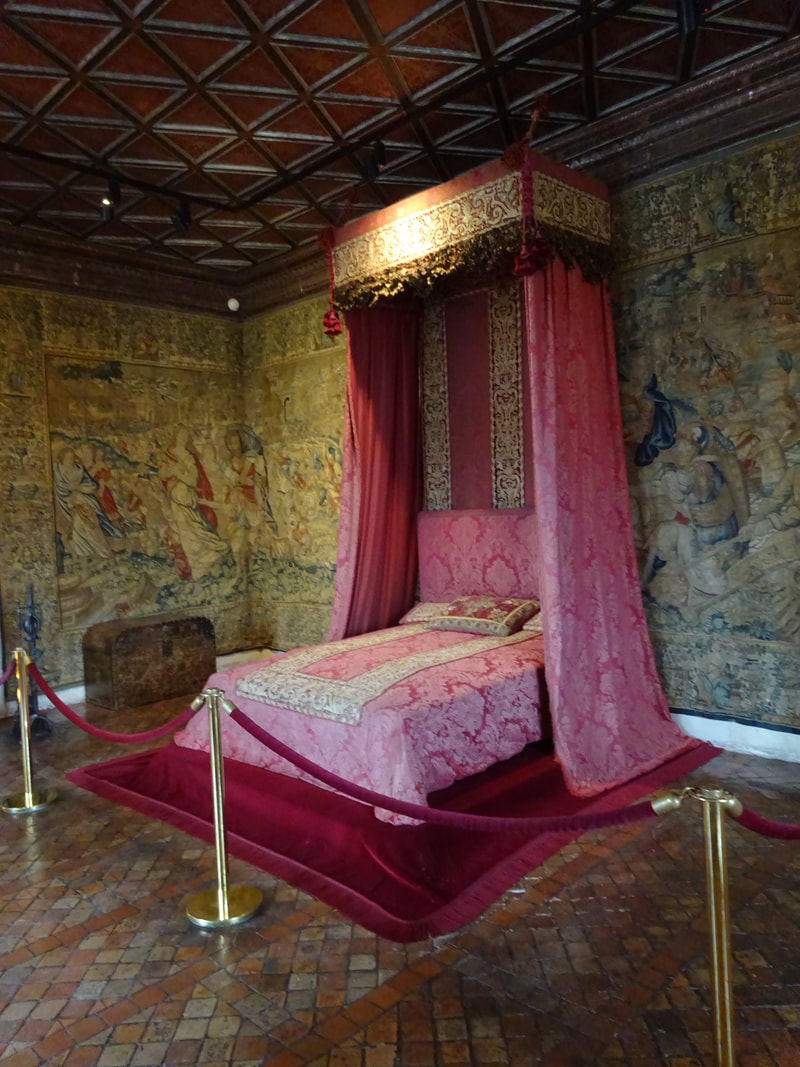
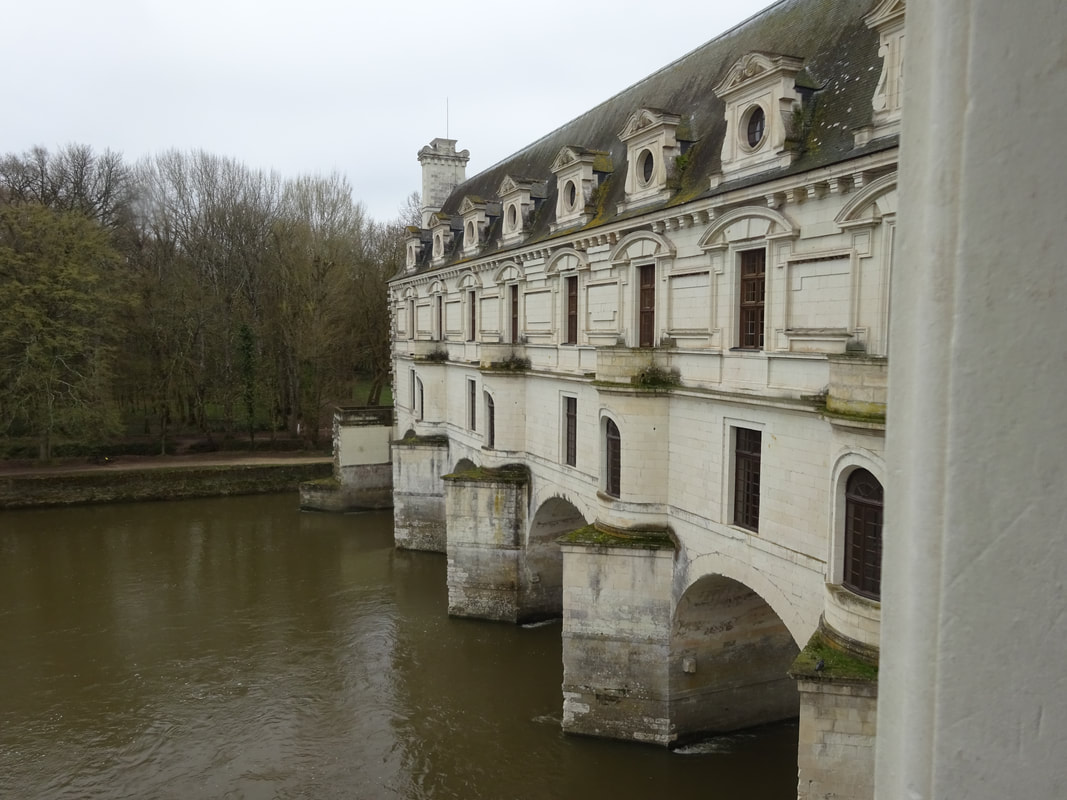
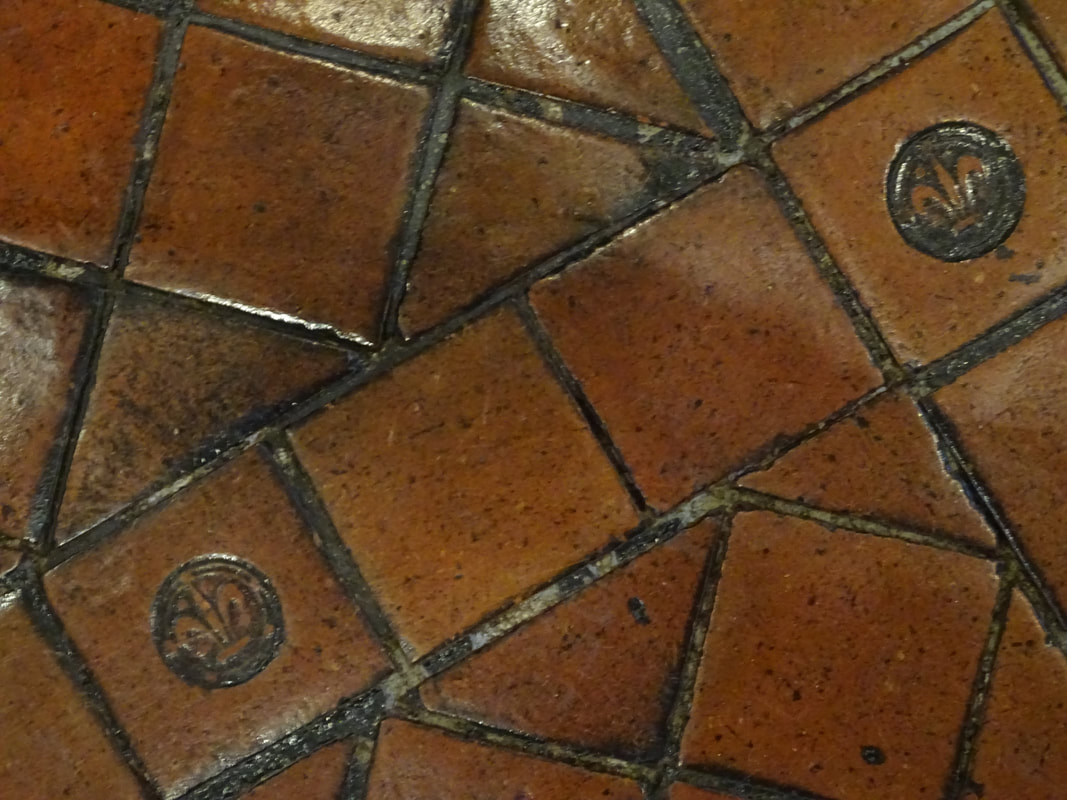
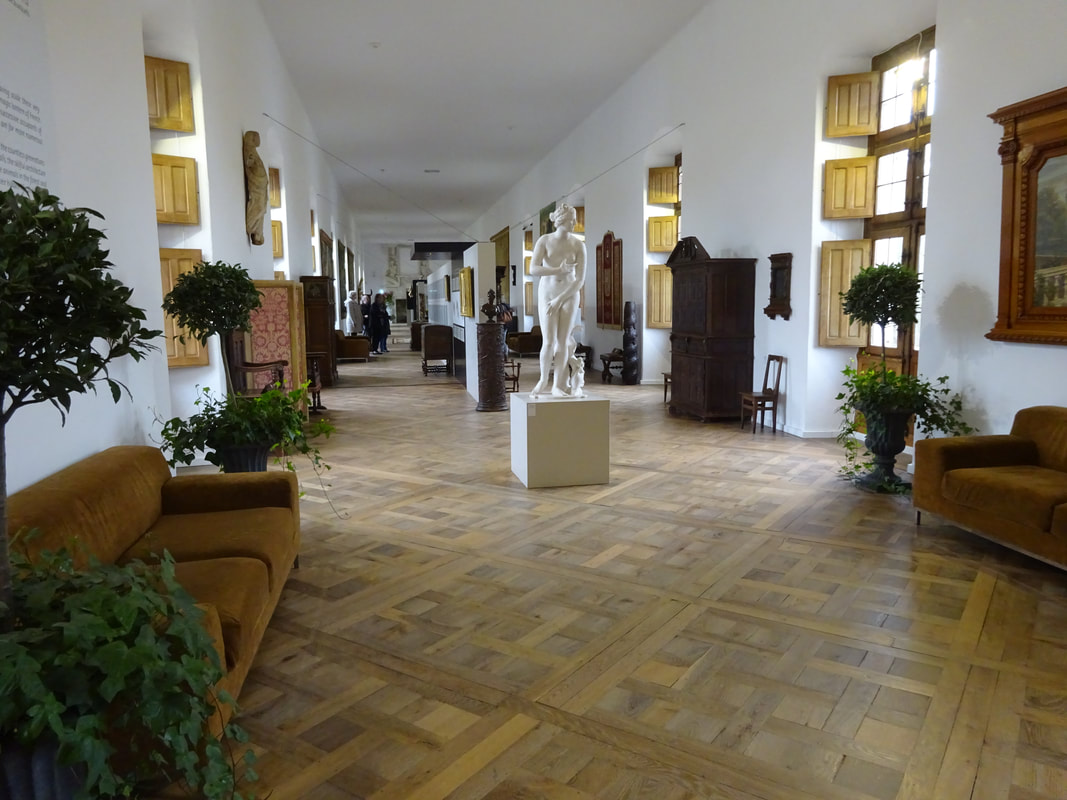
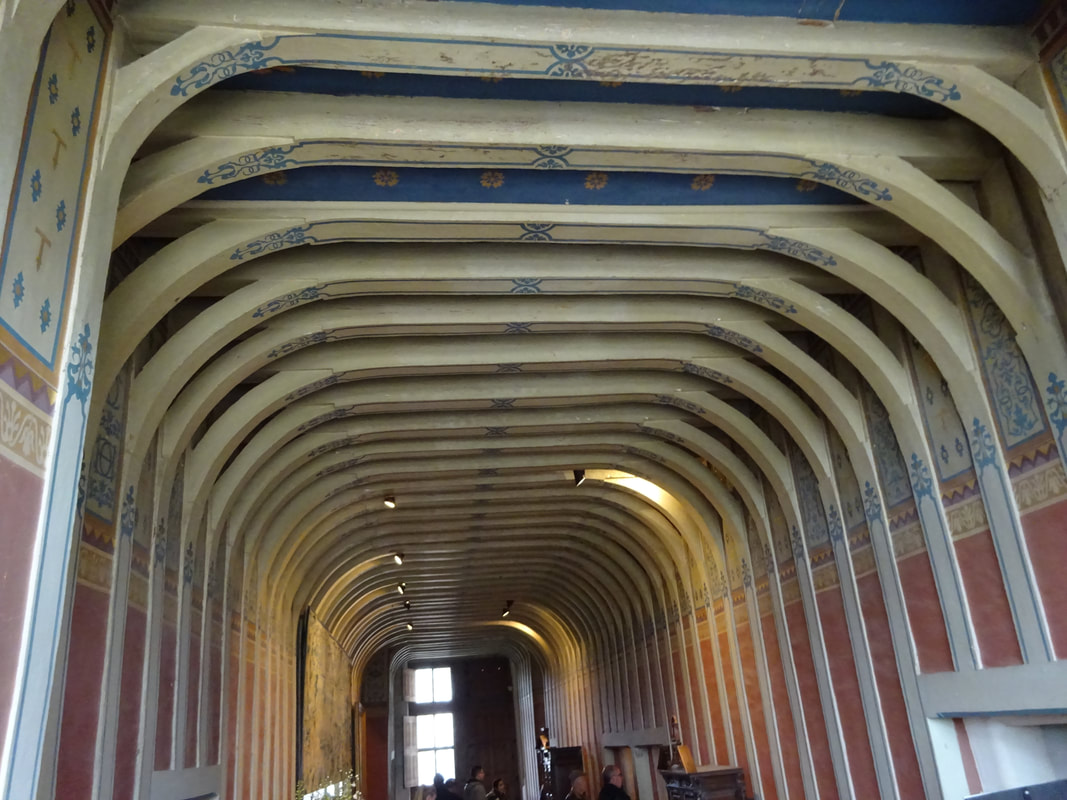
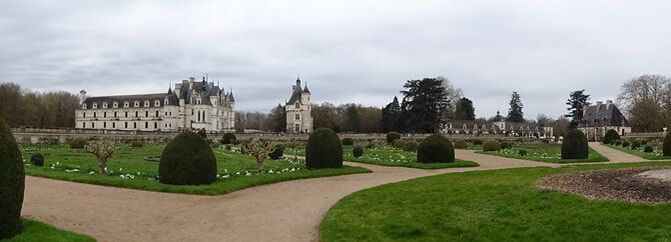
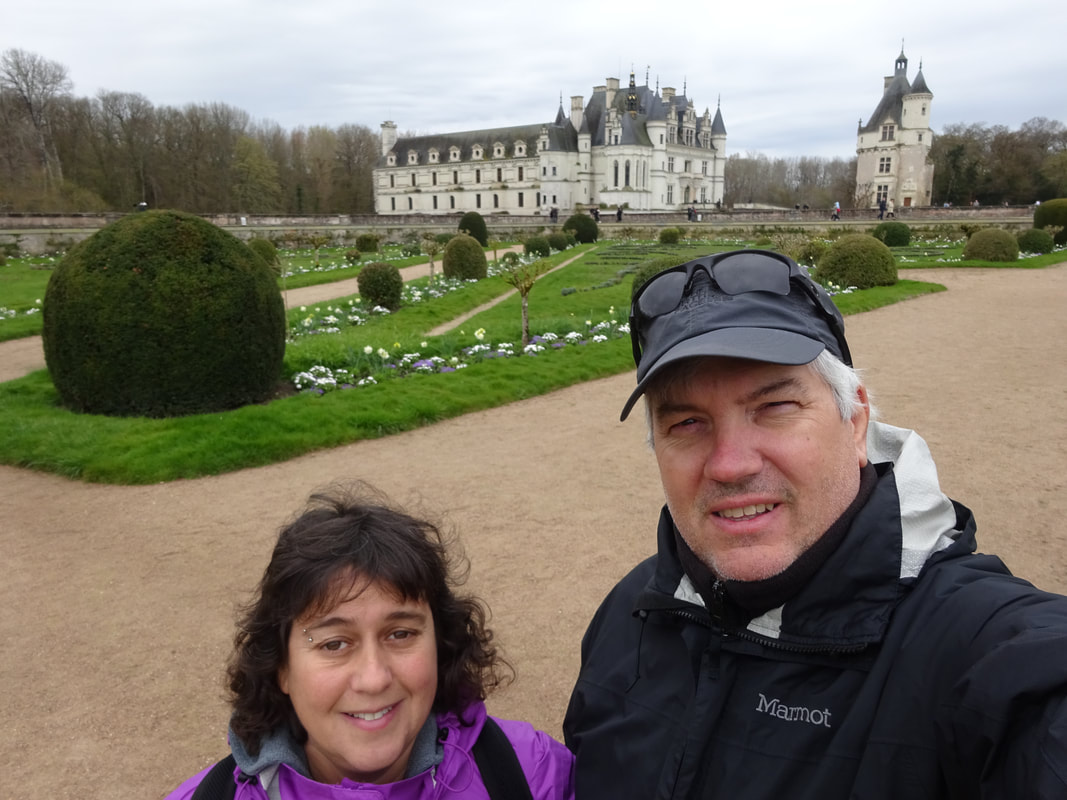
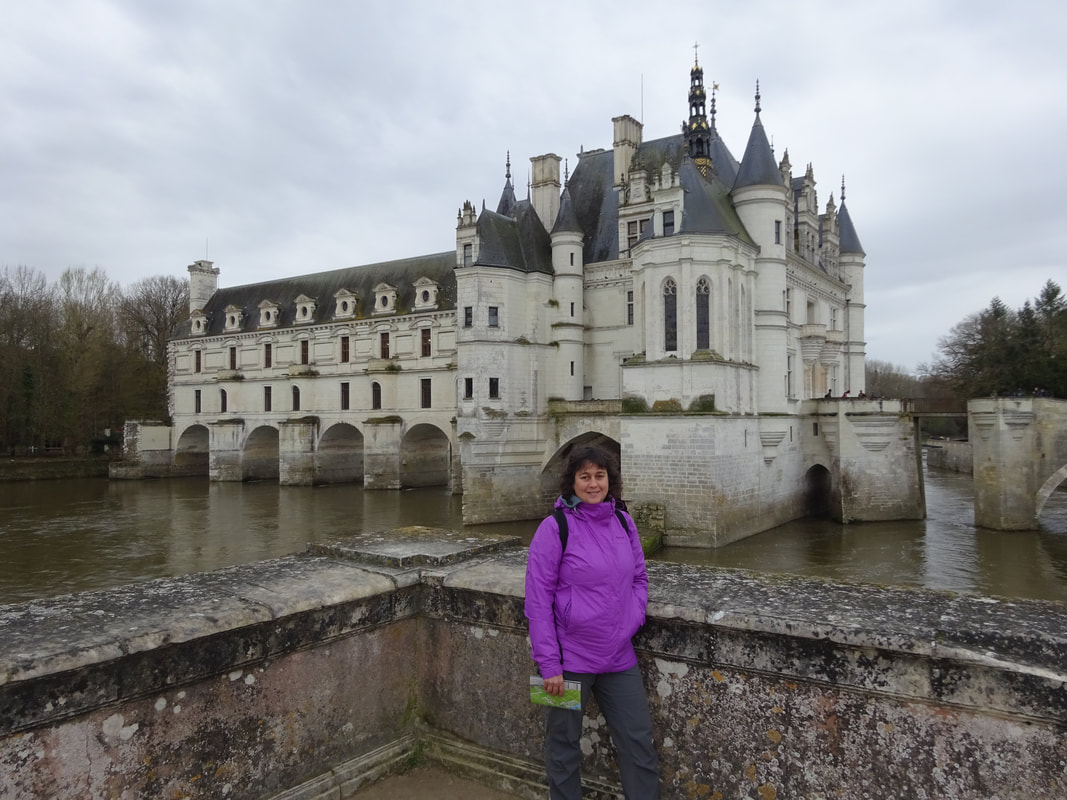
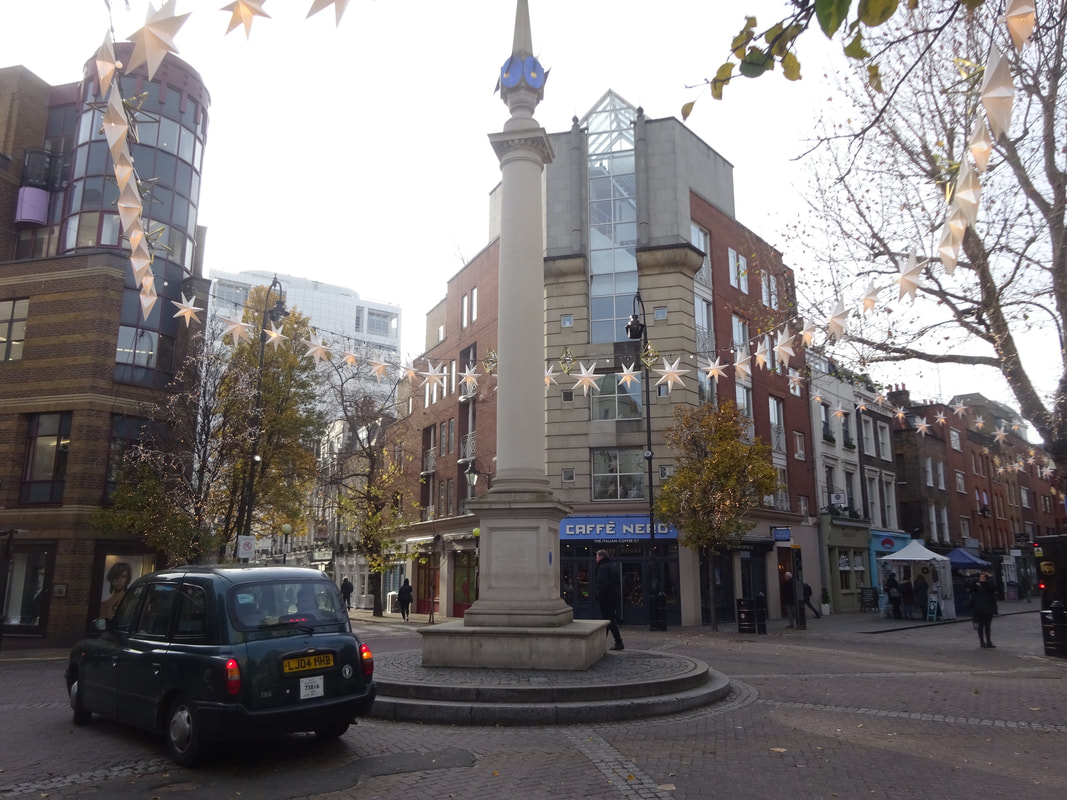
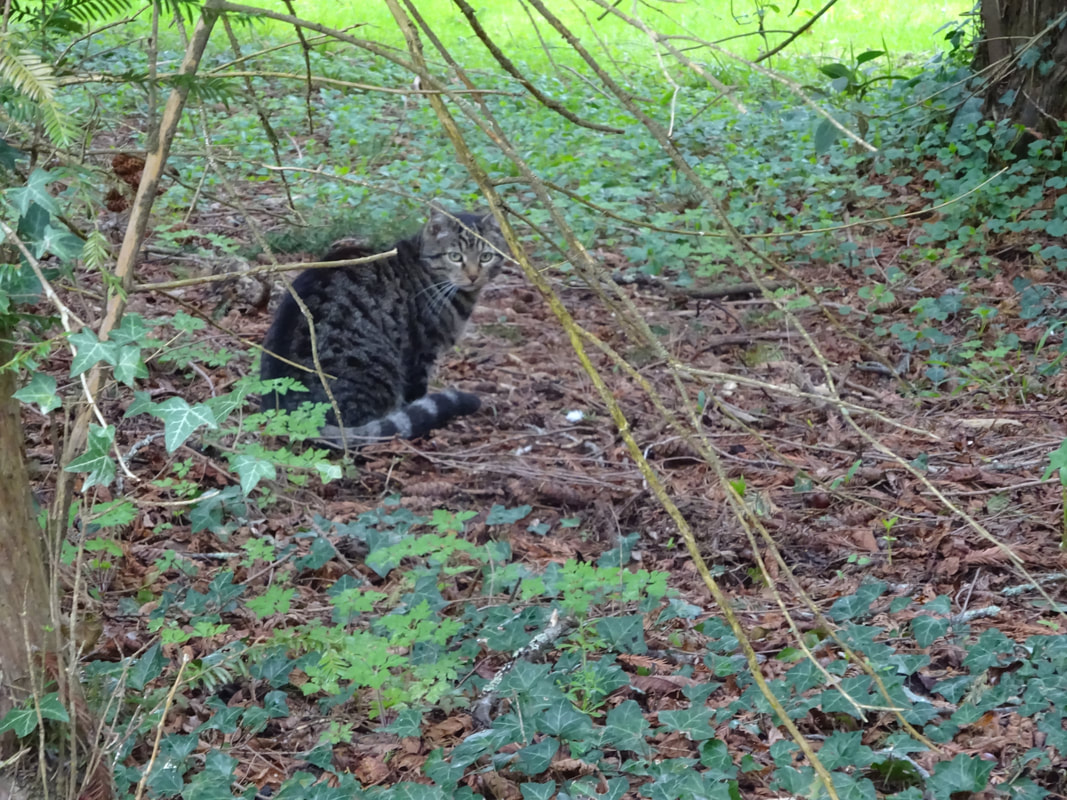
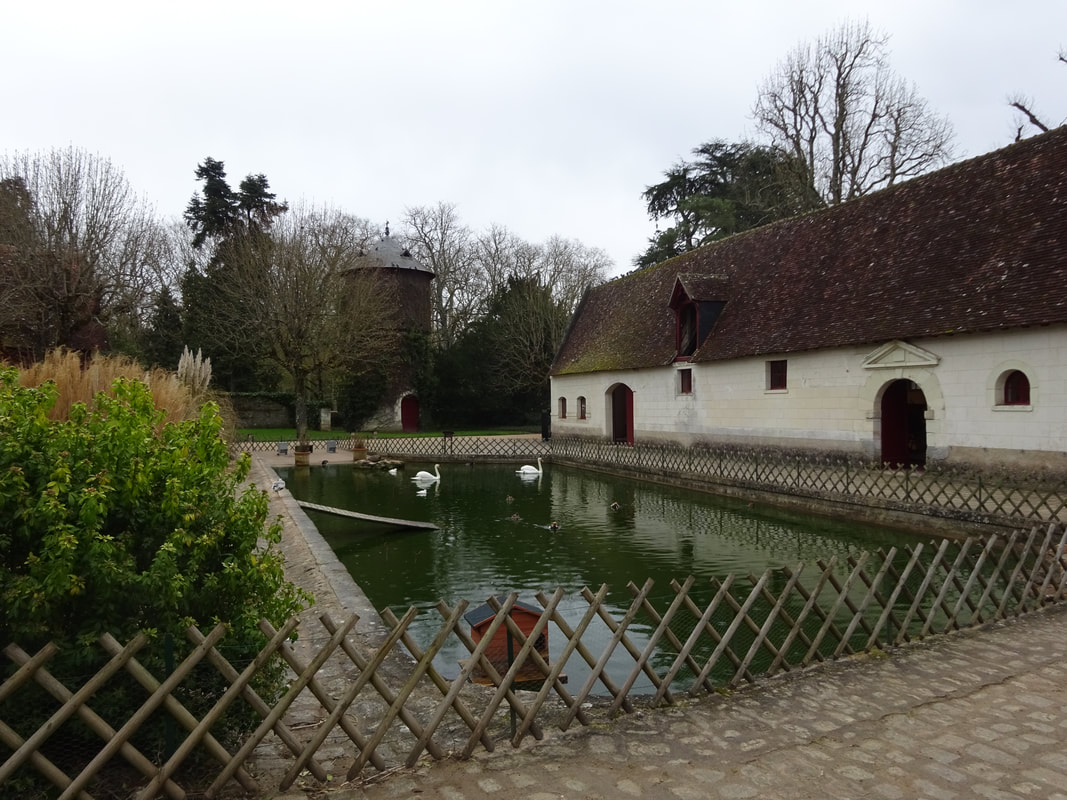
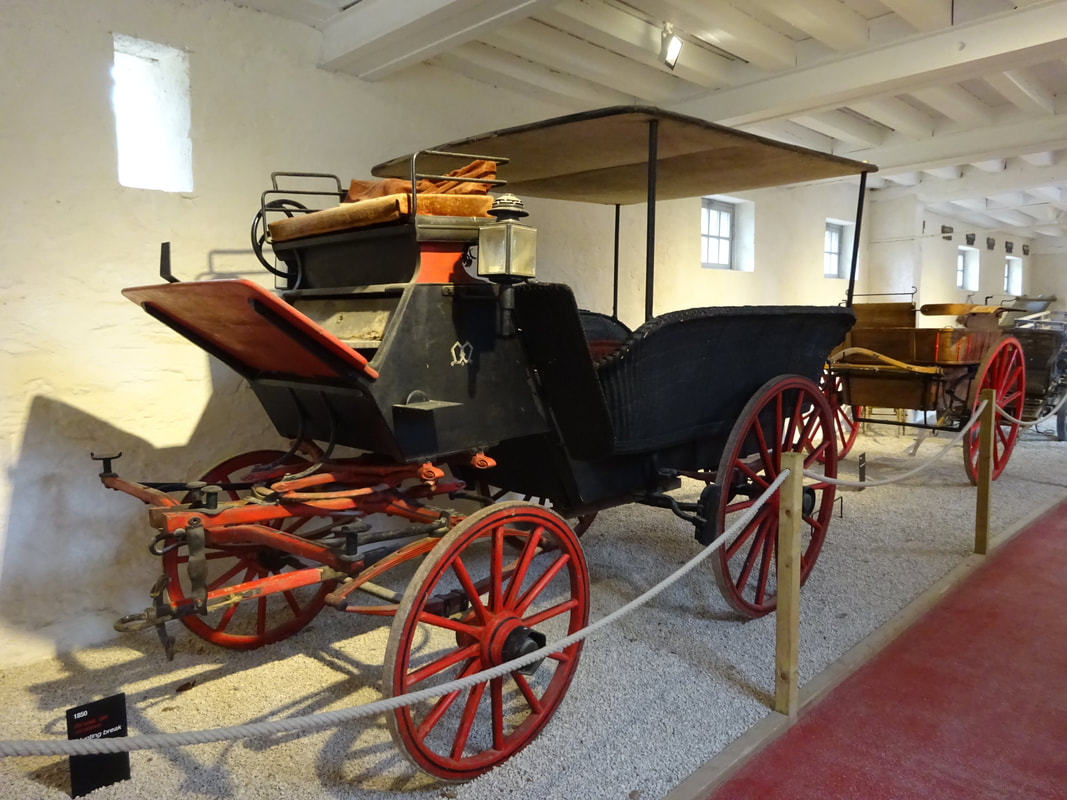
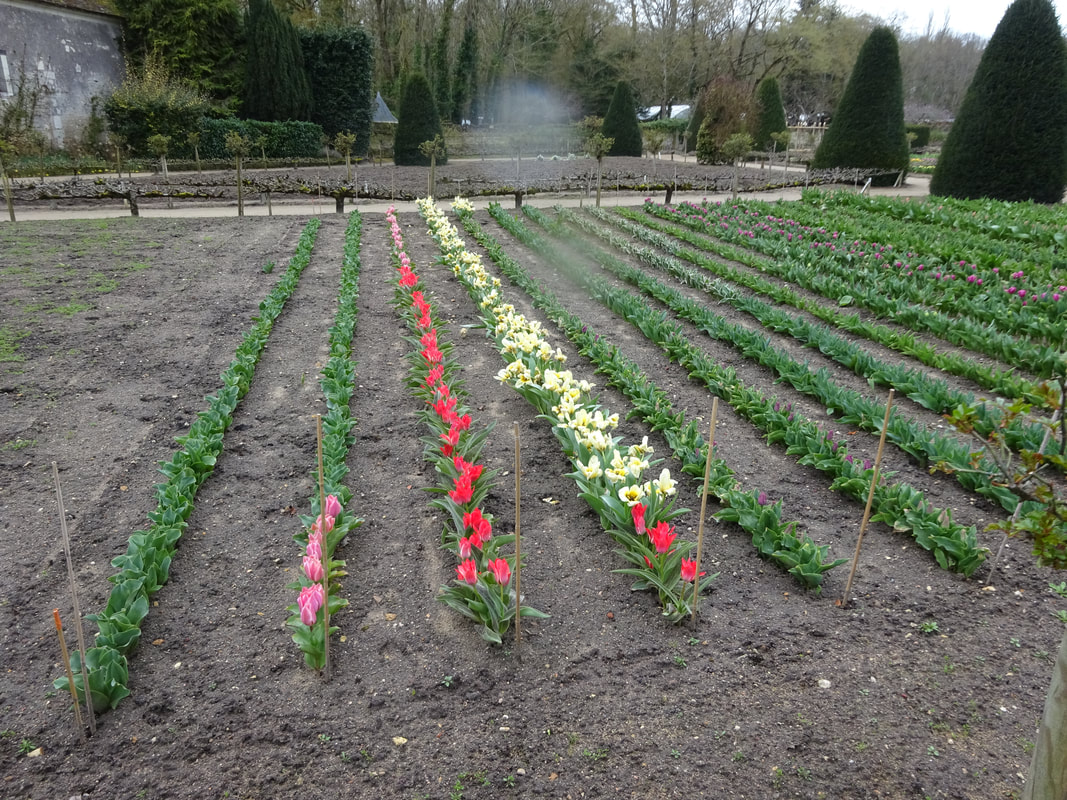
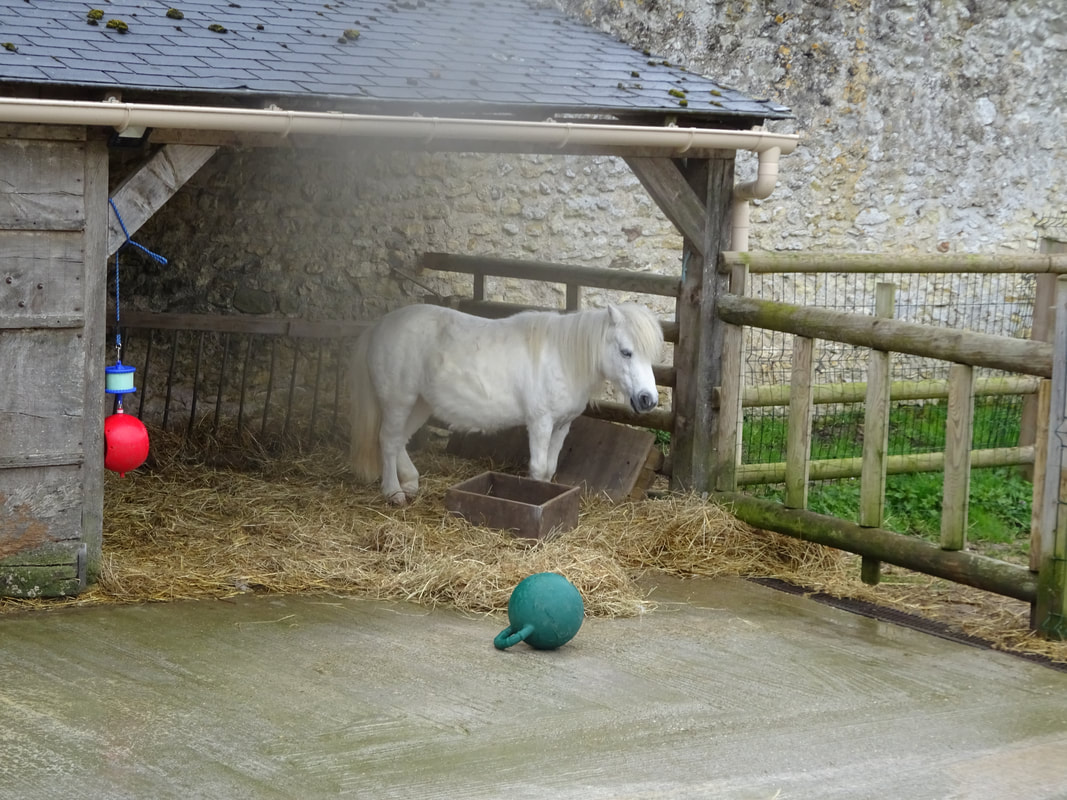
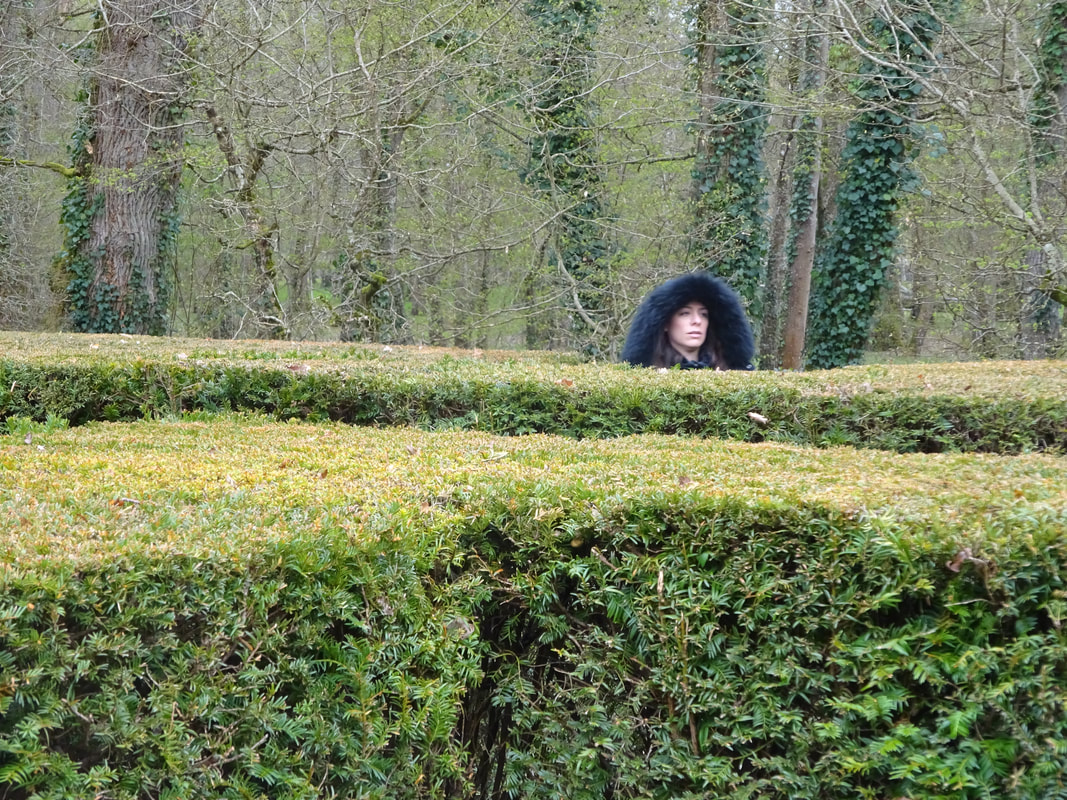
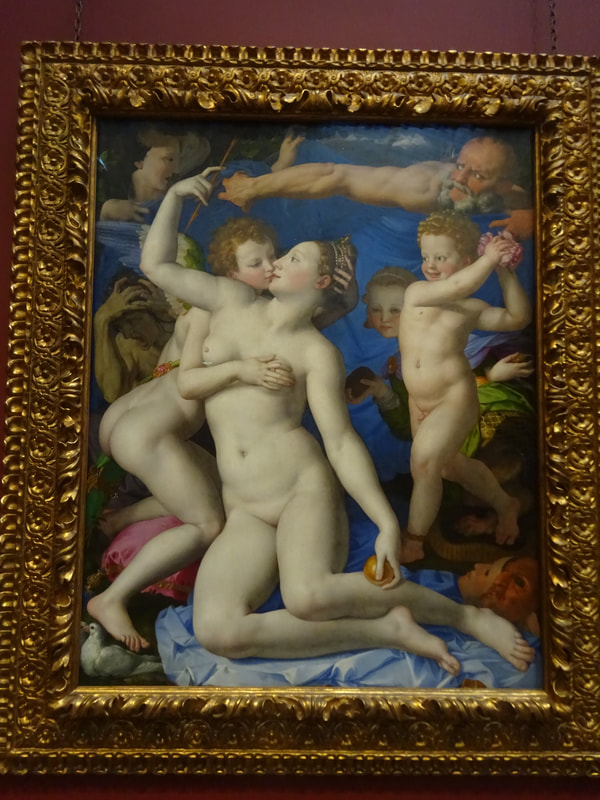
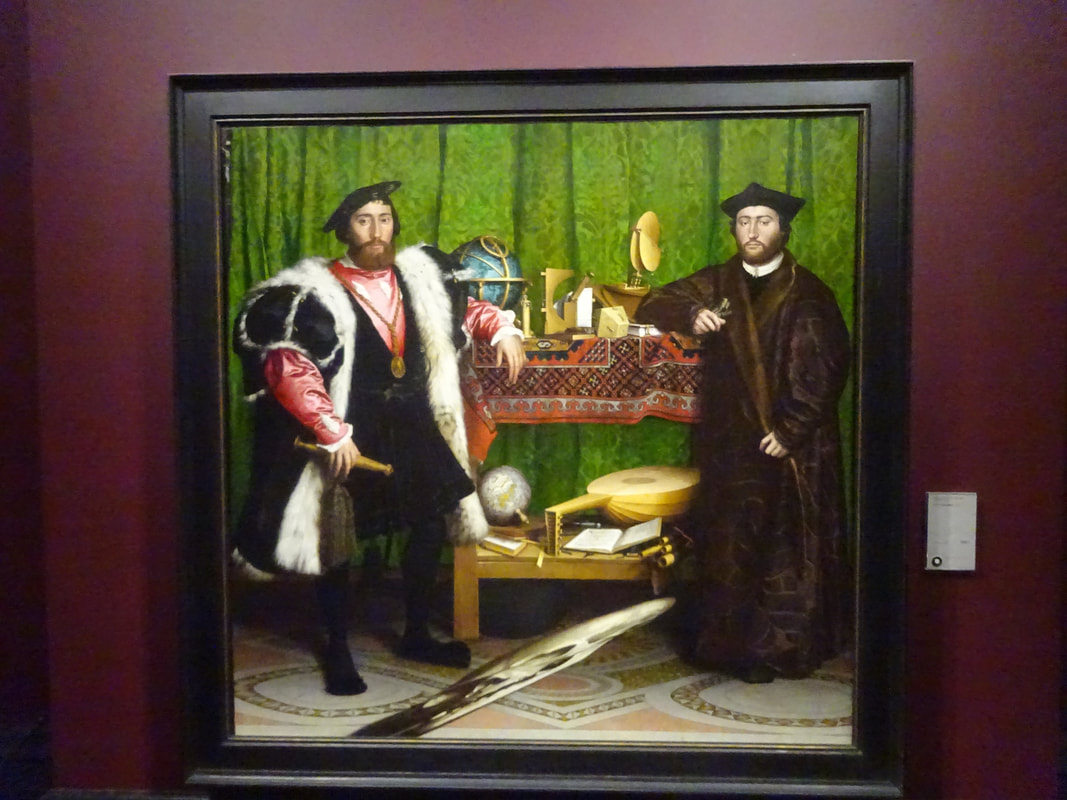
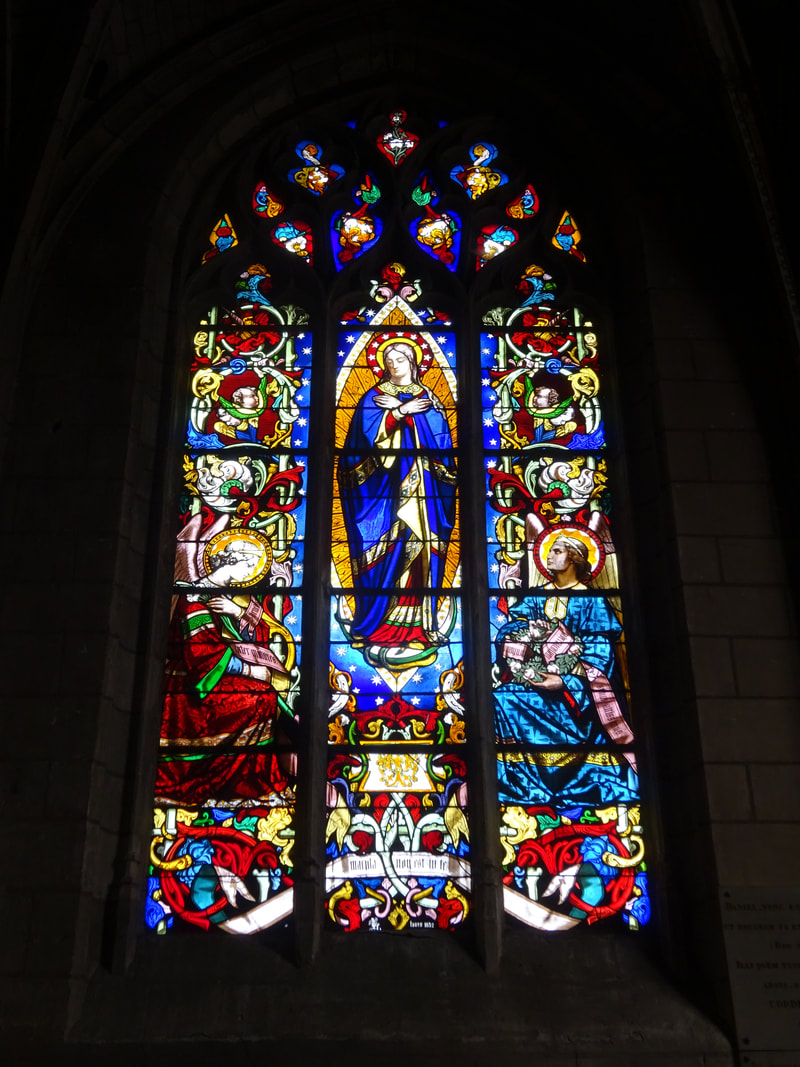
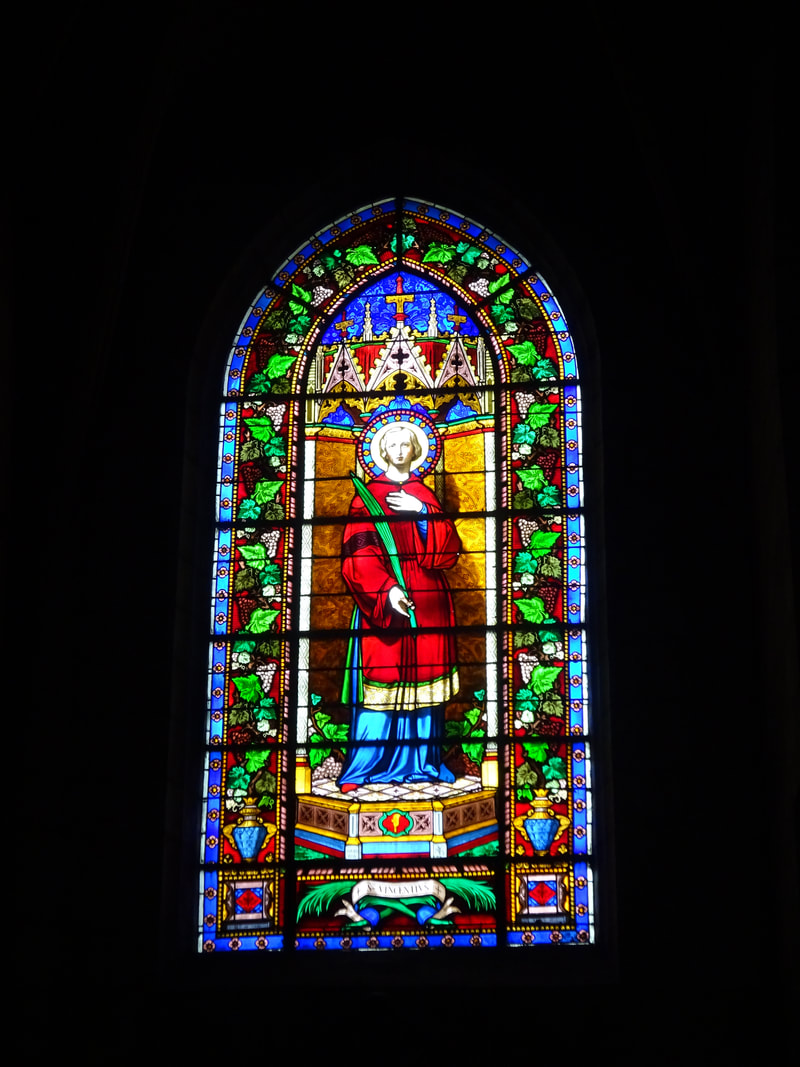
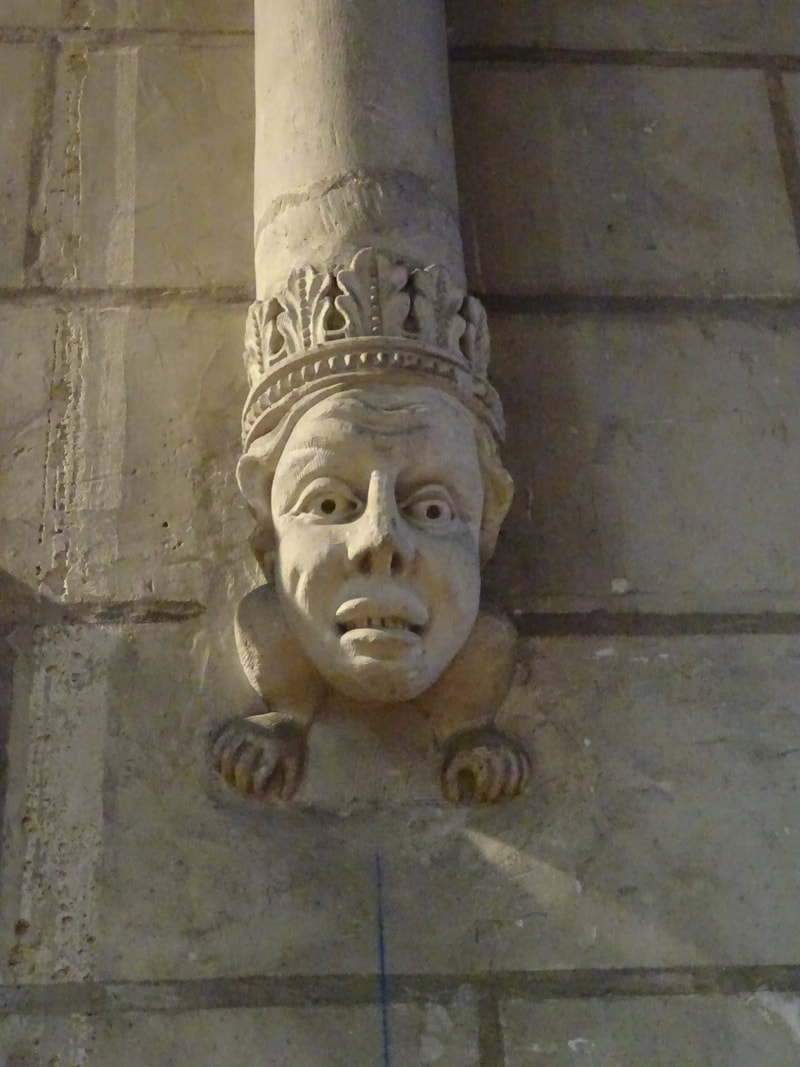

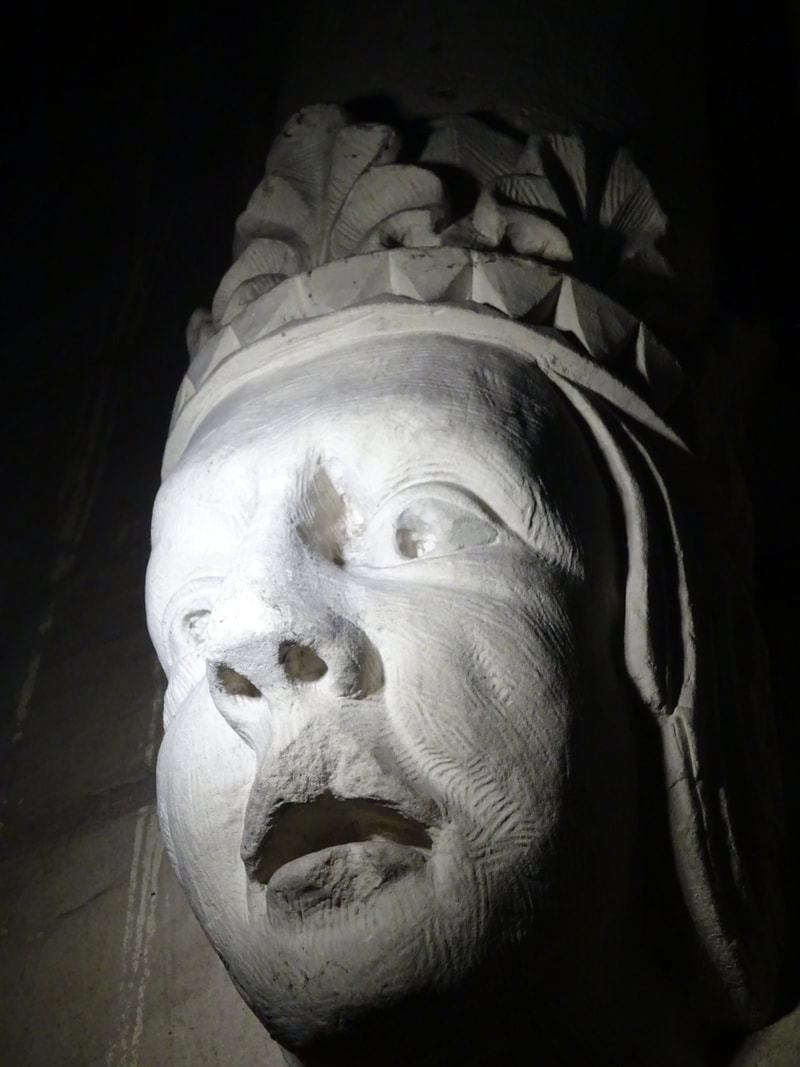
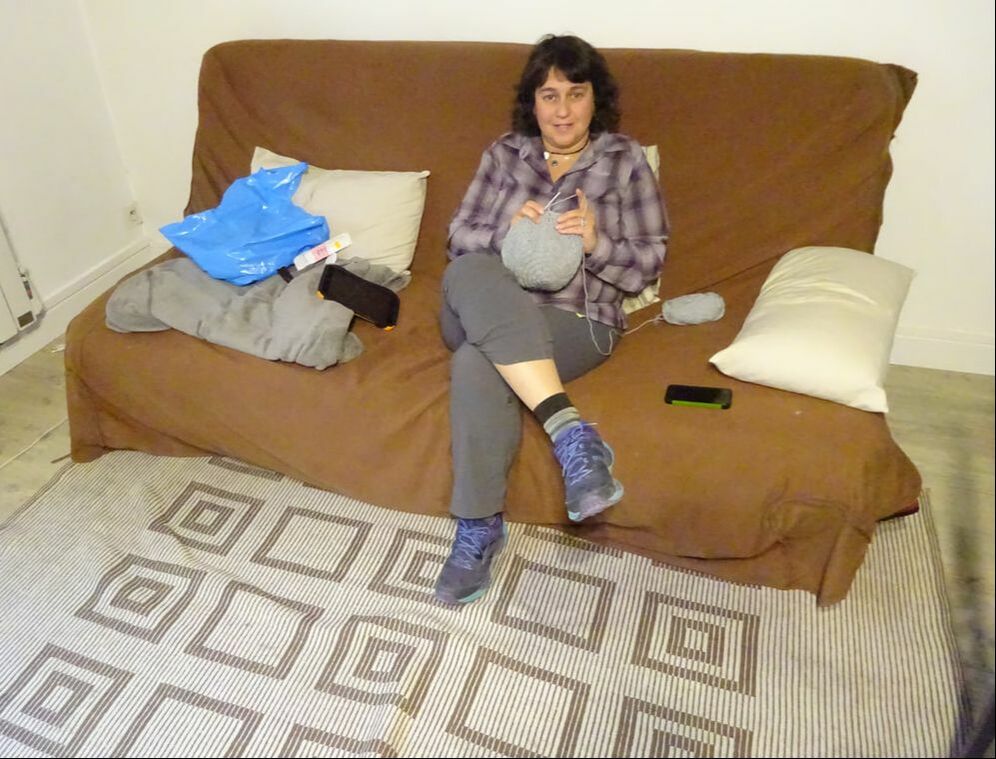
 RSS Feed
RSS Feed
